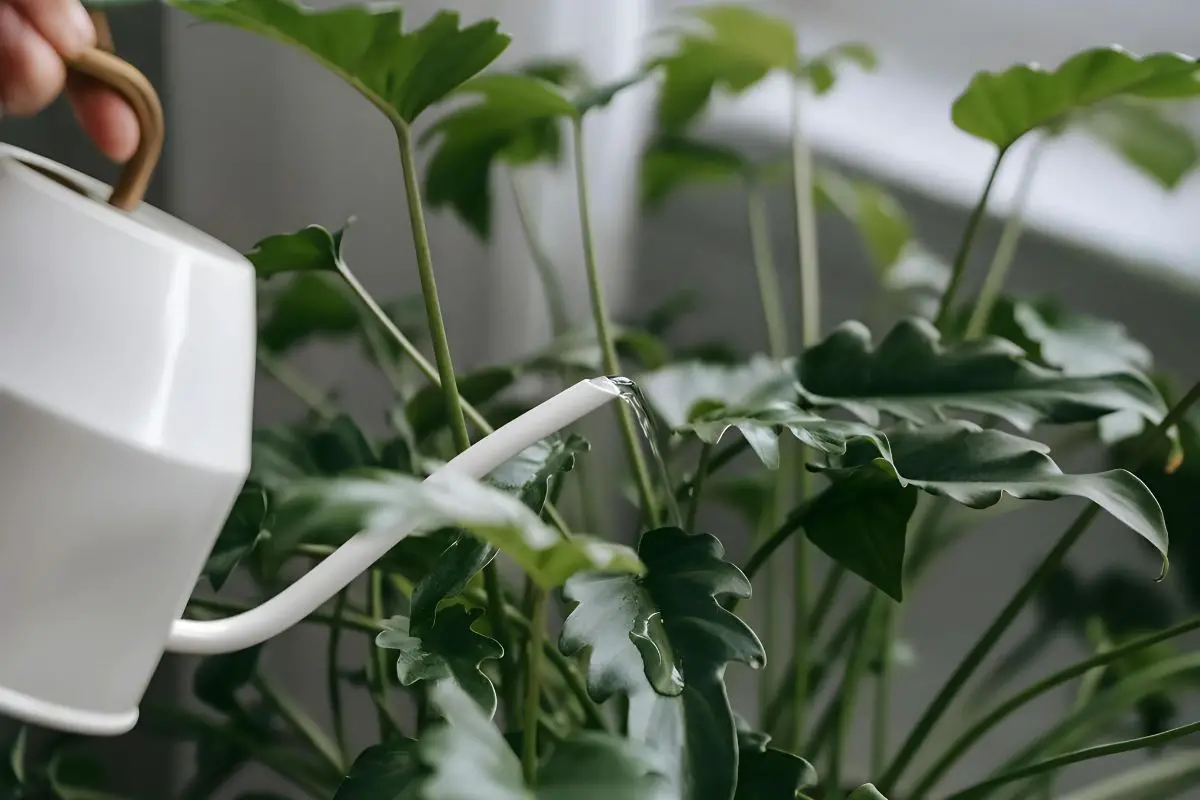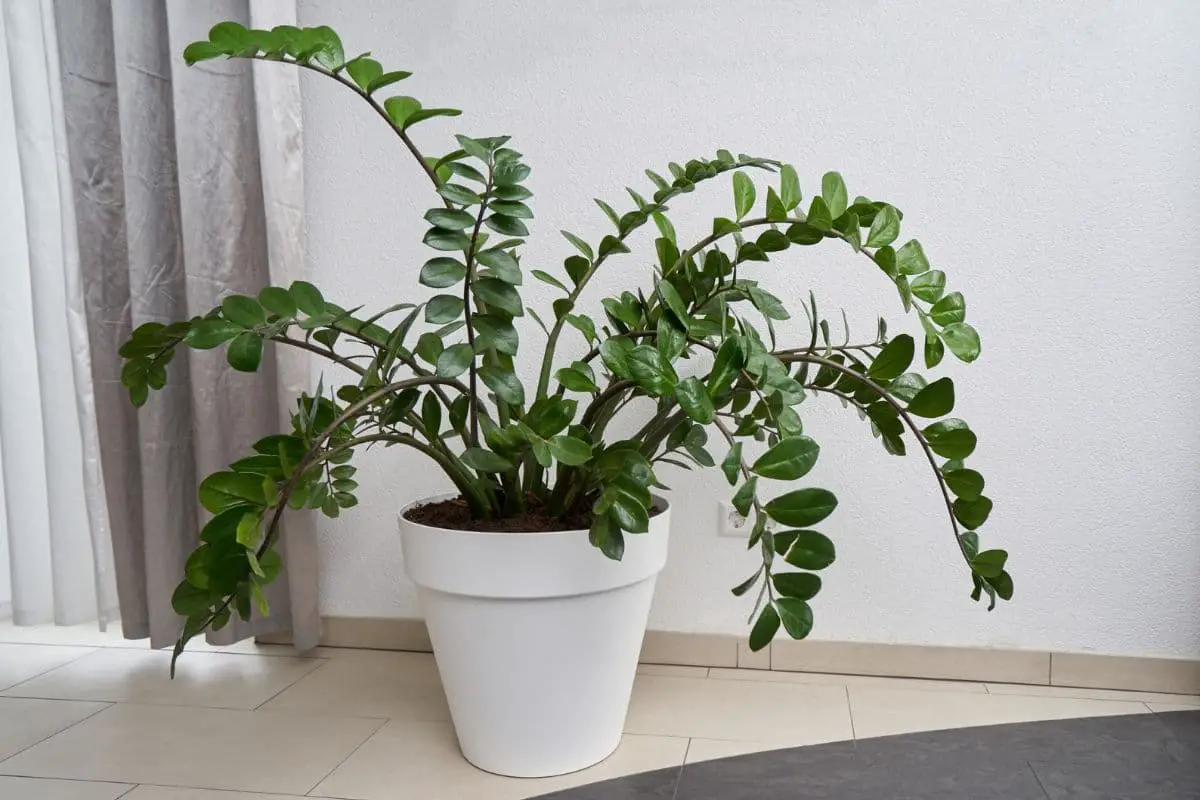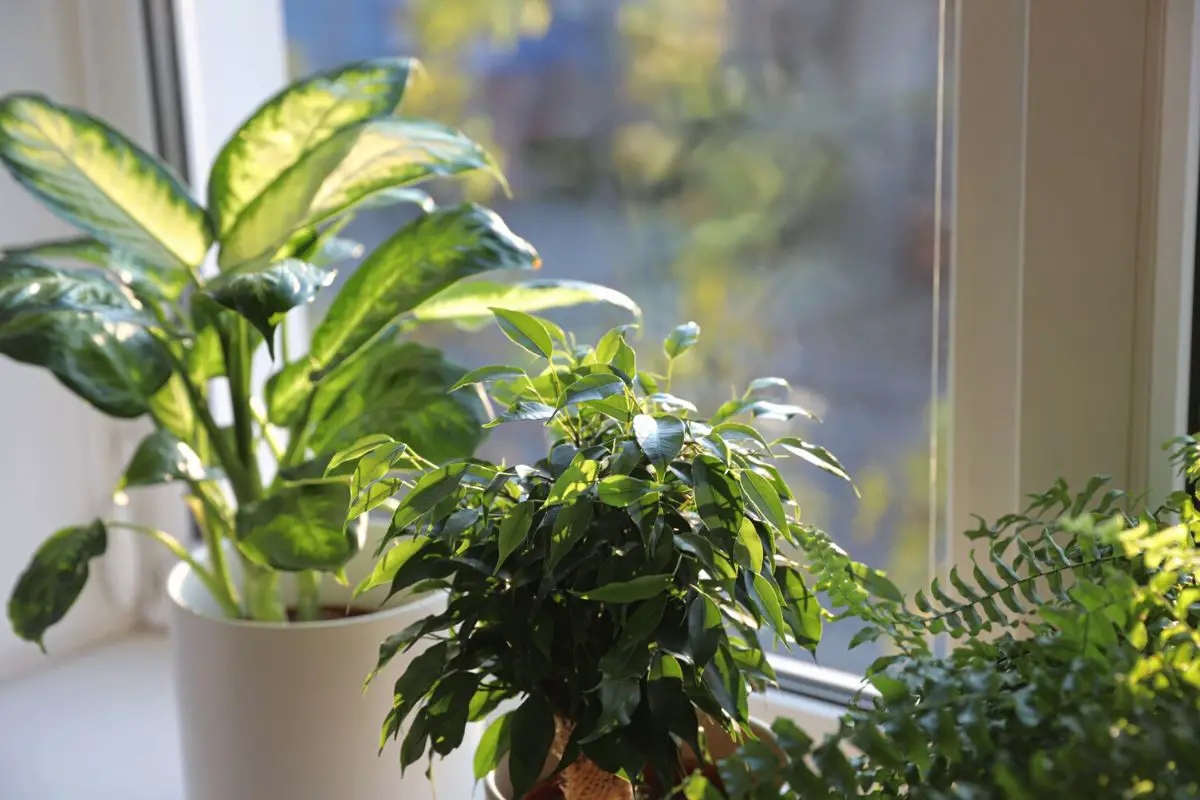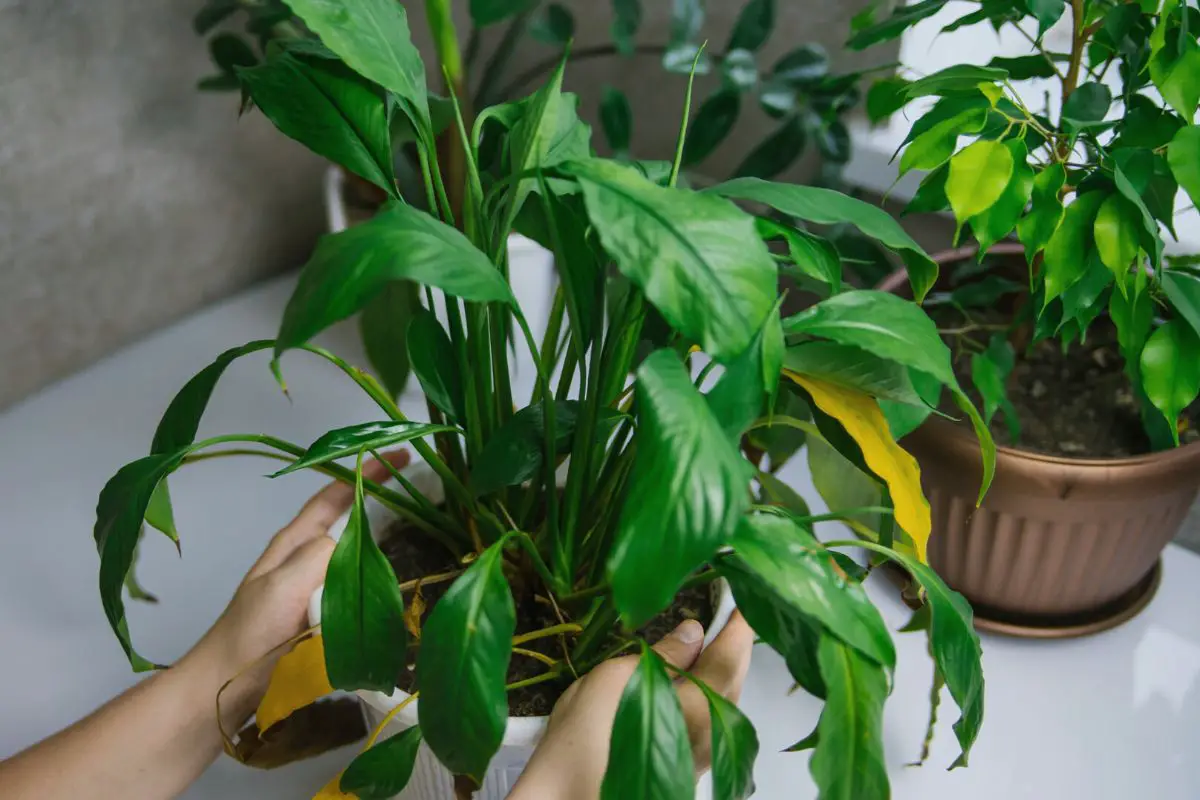Houseplants can brighten any indoor space, improve air quality, and lighten the mood.
There’s a wide selection of plants you can bring into your home. However, they require specific conditions to thrive in an enclosed environment. The best way to start is to understand your home’s light conditions and how much care you can provide them.
In this article, I’ll explore the traits and growth requirements of 35 popular houseplant varieties to guide beginners in choosing ones suitable for any home. This list includes plants that can grow even in low-light conditions and require minimal routine care.
I’ll also share essential care tips to make indoor gardening a simple, fun, and rewarding experience.
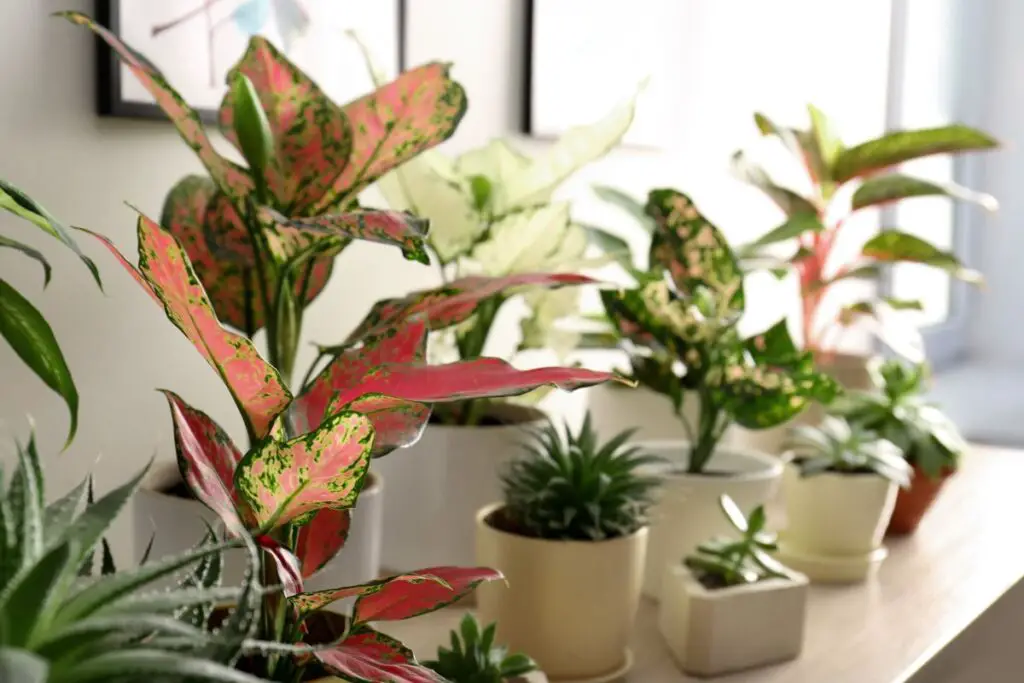
Houseplant Care: An Overview
Indoor plants need more attention than outdoor plants because they have limited soil space and access to rain and natural light. Nevertheless, houseplant care doesn’t have to take too much of your time.
Below are some helpful tips to keep in mind for a manageable plant care routine:
- Light and Proper Placement: Houseplants thrive in areas with bright, indirect sunlight, usually found within 4-8 feet (1.2-2.4 m) from a bright eastern, western, or southern window. Flowering or fruit-bearing plants may want to sit next to an eastern or southern window for higher yield.
- Selecting the Soil Mix: Potted plants need well-draining substrates. Cacti and succulents prefer loose soil with 60-70% porous materials (i.e., perlite and pumice). Other houseplants require a moist soil mix containing 25-50% porous materials.
- Best Watering Practice: Check the soil regularly to confirm if the top 2-3 inches (5-7.6 cm) is dry, which means your plant needs water. Frequent underwatering can cause the plant to lose vigor, whereas chronic overwatering can lead to root rot and plant death.
- Moderate Temperature: Most indoor plants thrive in moderate temperatures ranging from 65-75 °F (18-24 °C). To avoid drastic temperature fluctuations, keep them away from drafty windows and heating vents.
- Optimum Humidity: Humidity levels between 30 and 60% are conducive to plant life and human health.
- Pruning: Spring pruning can help maintain the shape and size of your houseplants. It can also improve the airflow, which can prevent pests and diseases. However, don’t prune more than a third of your plant at once.
- Maintenance: Regular inspection (at the same time you water your plants) can help diagnose and treat problems before they become serious. Dust and inspect the leaves for signs of pests, especially on the undersides and along the stems or petioles.
- Fertilizers: Houseplants may need fertilizer in the years between repotting because regular watering can leach the nutrients out of the pot’s drainage holes. Use liquid fertilizers at half-strength or slow-release organic fertilizers to avoid fertilizer burn.
African Violet (Saintpaulia ionantha)
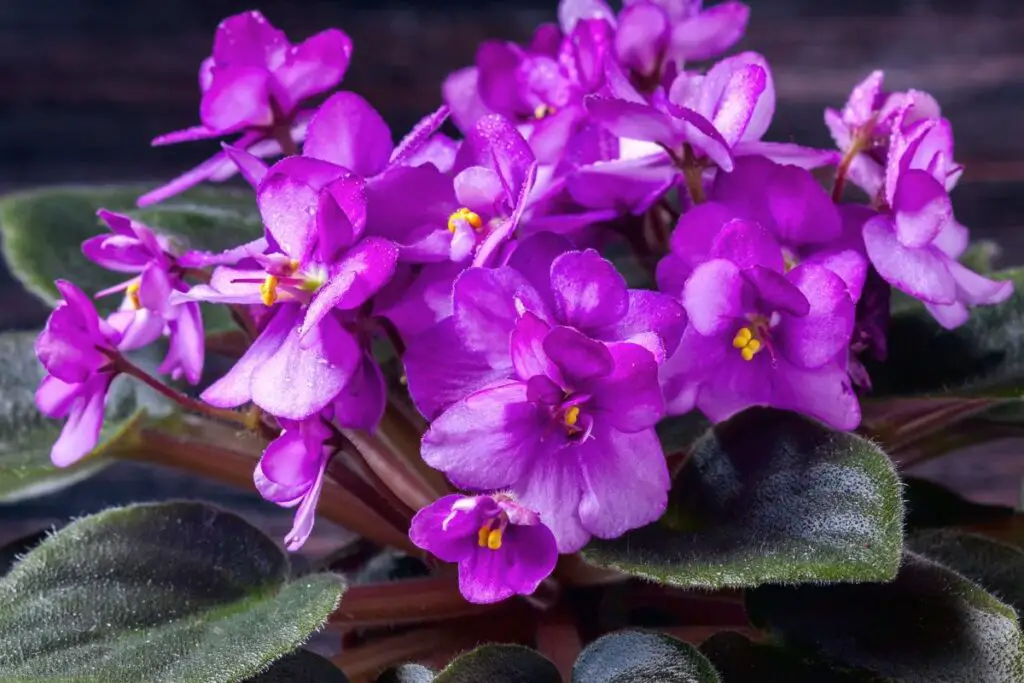
- Common Name: African violet
- Family: Gesneriaciae
- Height & Spread: 4-6 inches (10-15 cm) tall and 4-16 inches (10-40 cm) wide
- Sun Exposure: Dappled shade
- Soil Type: Moist, well-draining (coco peat/peat moss and perlite mix)
- Watering: Moderate, once weekly
- Toxicity: Non-toxic
African violets are popular for being one of the few flowering houseplants that thrive in lower light conditions. You can place them near an unobstructed northeast or northern window.
They have magenta, lavender, or purple flowers that remain in bloom for up to 2 months before fading. They’ll keep producing new blooms all year round if they receive 14-16 hours of low light intensity daily from natural and/or artificial sources.
The leaves are fuzzy and will develop water-soaked spots when wet, so avoid wetting the foliage at watering. Use only tepid (68 °F or 20 °C) water, as the plant is sensitive to the cold and might not produce flowers.
Air Plant (Tillandsia spp.)
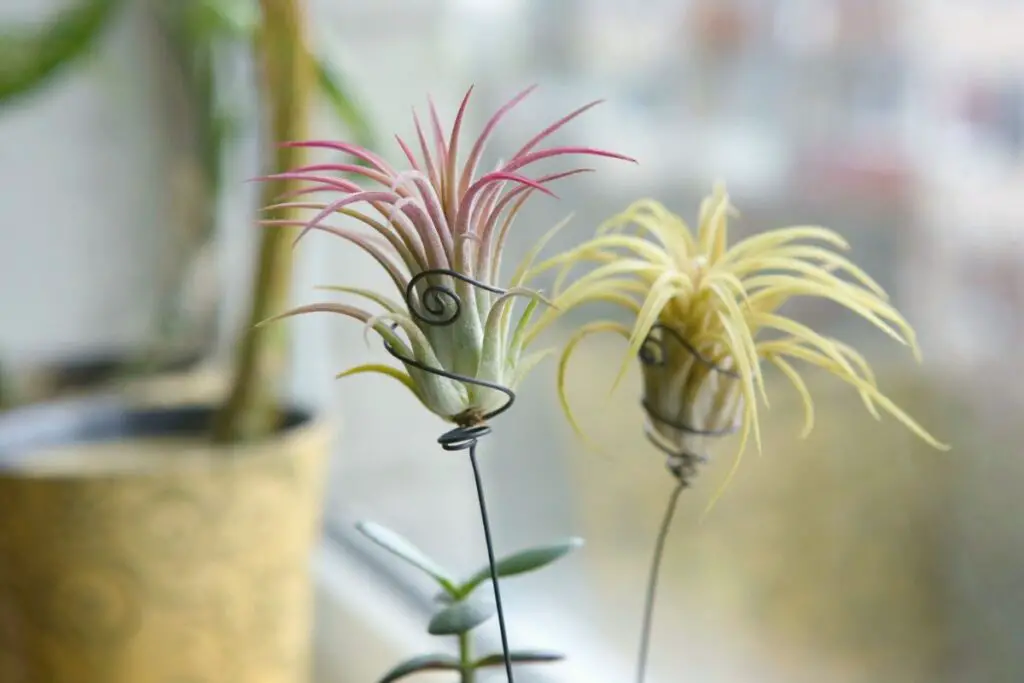
- Common Name: Air plant
- Family: Bromeliaceae
- Height & Spread: Up to 7 feet (2.1 m) tall and up to 4 feet (1.2 m) wide
- Sun Exposure: Partial shade
- Soil Type: Doesn’t require soil
- Watering: Moderate, Soak in water for an hour once every 1-2 weeks
- Toxicity: Non-toxic
Air plants are excellent low-maintenance plants with many aesthetic options since they don’t grow in soil. You can place them in crystal globes, terrariums, or wooden panels against the wall. Just ensure they receive bright, indirect light throughout the day.
These plants absorb moisture and nutrients from the air through their trichomes, so it’s crucial to keep the humidity around them at 50-60%. You can mist them lightly once every 1-2 days to boost the local humidity.
It’s easy to rehydrate air plants. Simply soak them in tepid water for 30-60 minutes once a week in warm seasons and once every 2 weeks in the fall and winter. Allow your plants to dry upside down in a cool, dry room for 2-4 hours after soaking to prevent rot.
Aloe Vera (Aloe vera)
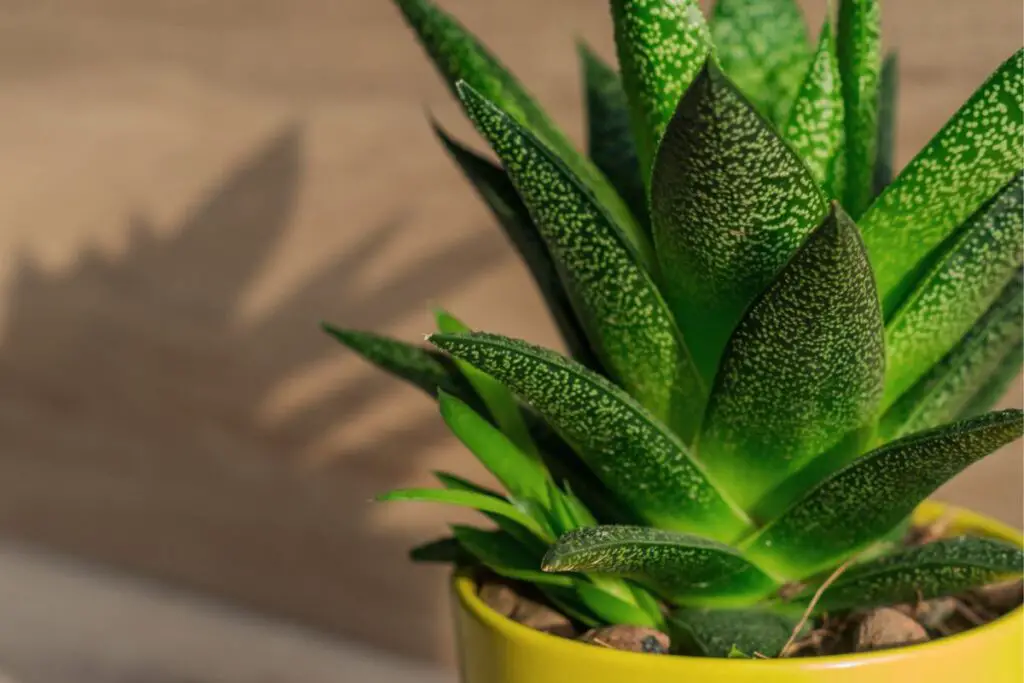
- Common Name: Aloe vera, True aloe, Burn plant
- Family: Asphodelaceae
- Height & Spread: 1-2 feet (0.3-0.6 cm) tall and ½-1 foot (0.15-0.3 m) wide
- Sun Exposure: Full sun
- Soil Type: Loose, well-draining
- Watering: Drought-tolerant, once every 2-3 weeks
- Toxicity: Mild
Aloe vera is a famous succulent because of its low-maintenance needs, attractive foliage, and medicinal properties.
It loves a sunny spot next to an eastern or southern window. Rotate the pot regularly and water your plant more often (once a week) if it receives direct sunlight. Make sure it grows in loose, well-draining soil, such as the standard cactus or succulent mix.
The sap or gel from the succulent leaves can relieve burns and itchiness. It’s also a key ingredient in many healthy food recipes, beverages, and cosmetic products. However, ingestion of unprocessed sap can lead to abdominal cramps, constipation, or vomiting.
Anthurium (Anthurium andraeanum)
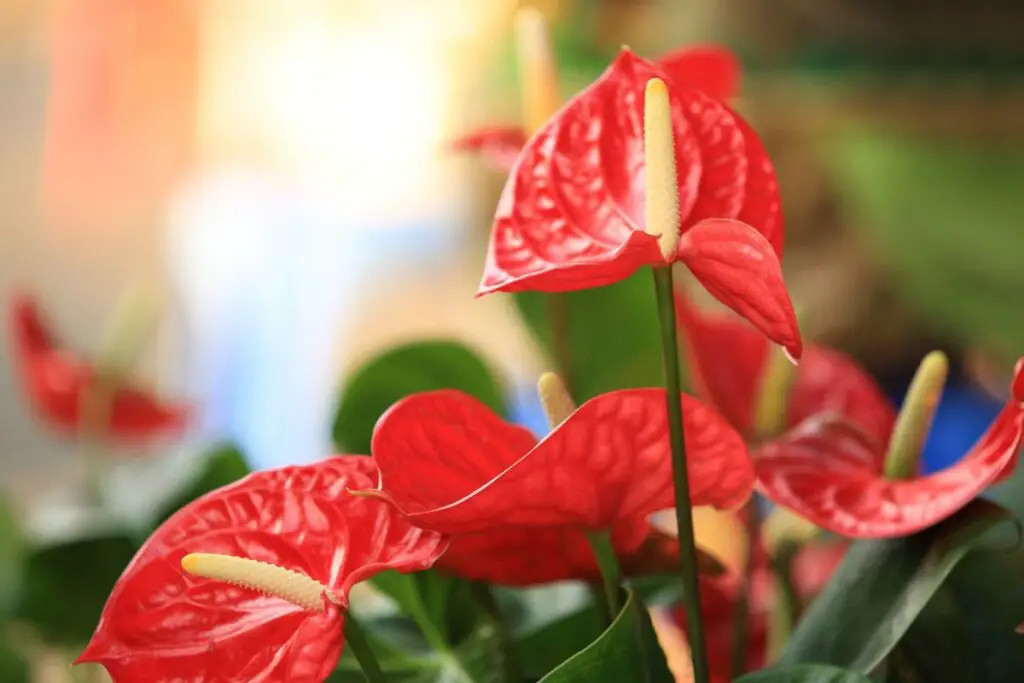
- Common Name: Anthurium, Painter’s palette, Flamingo lily
- Family: Araceae
- Height & Spread: 2-3 feet (0.6-0.9 m) tall and 1-2 feet (0.3-0.6 m) wide
- Sun Exposure: Partial sun to partial shade
- Soil Type: Porous and well-draining
- Watering: Moderate, once weekly
- Toxicity: Severe
If you have a sunny window, anthuriums are one of the easiest flowering plants to grow indoors. They like 2-4 hours of dappled sunlight to produce spadix flowers surrounded by bright red bracts.
However, too much sun can curl or burn the leaves. Give your plant pot a quarter or a half turn at watering to promote even growth and prevent leaf scorch.
They prefer porous soil for faster drainage and better air circulation around the thick roots. Use a standard orchid mix or a homemade recipe with equal parts coco peat, perlite, and bark.
Keep anthuriums out of the reach of children and pets. When ingested in large quantities, all parts of the plant can cause mouth pain and irritation.
Chinese Evergreen (Aglaonema modestum)
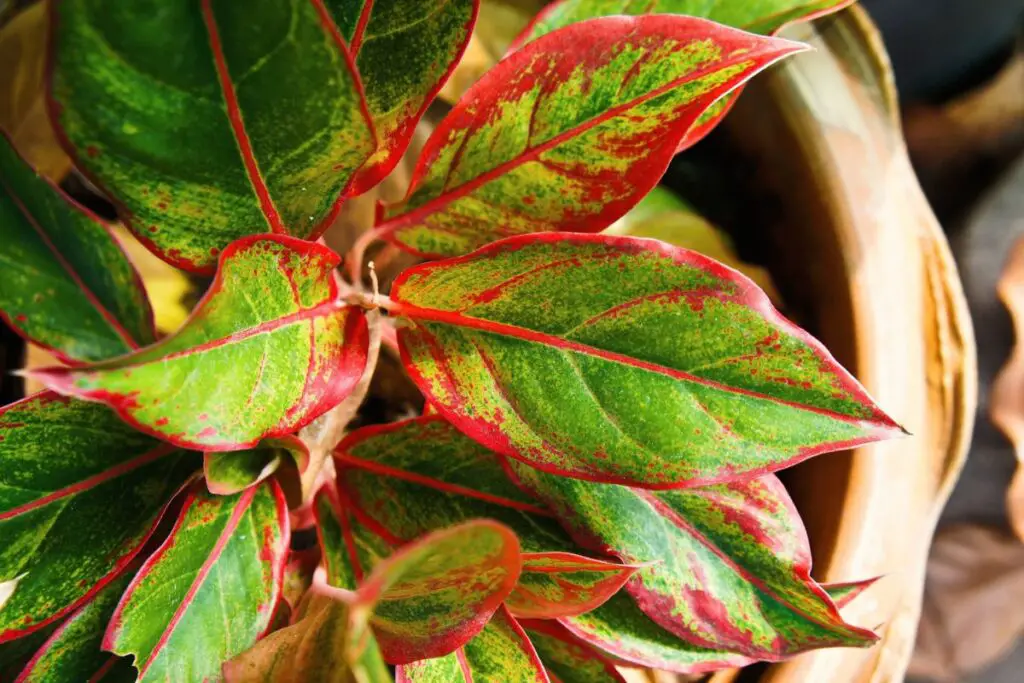
- Common Name: Chinese evergreen
- Family: Araceae
- Height & Spread: 1-3 feet (0.3-0.9 m) tall and wide
- Sun Exposure: Partial or deep shade
- Soil Type: Moist, well-draining, rich
- Watering: Moderate, once weekly
- Toxicity: Mild
Chinese evergreen is prized for its large leaves that reach up to 12 inches (30 cm) long and 6 inches (15 cm) wide. It’s popular in homes or offices with little access to bright natural light because direct sunlight can turn the leaves yellow.
Plain green Aglaonema varieties thrive in low-light conditions, such as near a north or north-eastern window. They’ll also grow well under fluorescent lights for around 12 hours a day. Variegated cultivars, on the other hand, prefer 8-10 hours of bright, indirect sunlight to maintain their leaf markings.
All parts of the plant are mildly toxic to humans and pets when ingested. Symptoms include mouth pain, irritation, and swelling.
Chinese Money Plant (Pilea peperomioides)
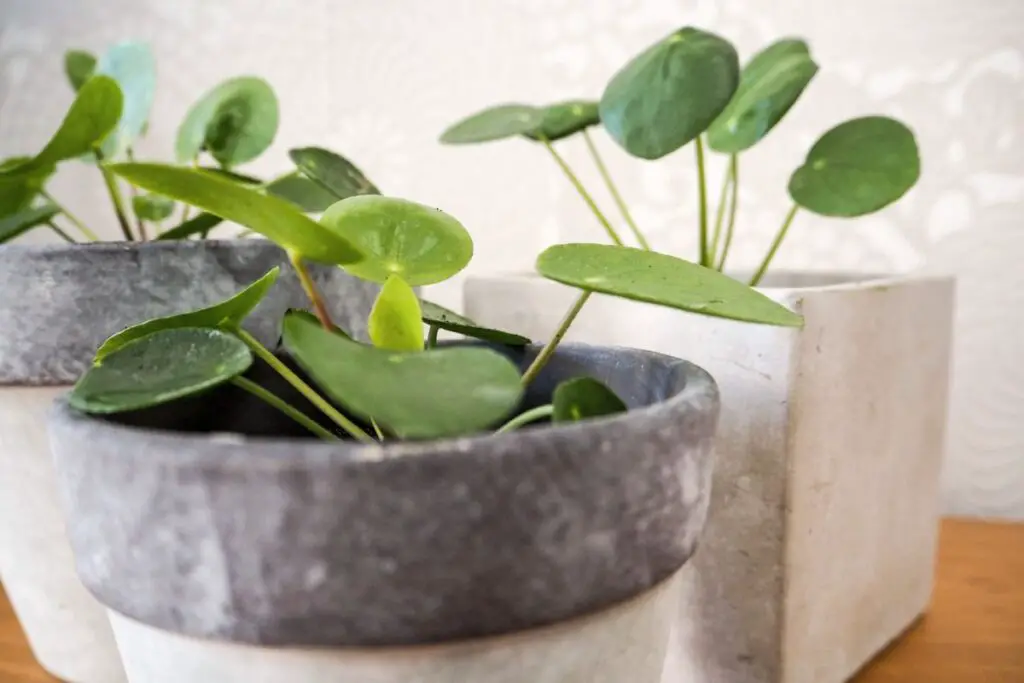
- Common Name: Chinese money plant, Pancake plant
- Family: Urticaceae
- Height & Spread: 1 foot (0.3 m) tall and wide
- Sun Exposure: Partial shade
- Soil Type: Moist, well-draining, rich
- Watering: Moderate, once weekly
- Toxicity: Non-toxic
Chinese money plant is famous for individual coin- or pancake-shaped leaves growing at the tips of long, fleshy stalks.
It remains compact when grown in bright, indirect light indoors. In lower light conditions, the main stem may lean toward the light source and the leaf growth will be more concentrated on the light-exposed area.
This plant likes well-draining soil rich in organic matter, such as a compost-perlite mix. Its shallow, fibrous roots will easily rot when kept in soggy soil, so water your plant only when the top half of the potting mix is dry.
Cornstalk Dracaena (Dracaena fragrans)
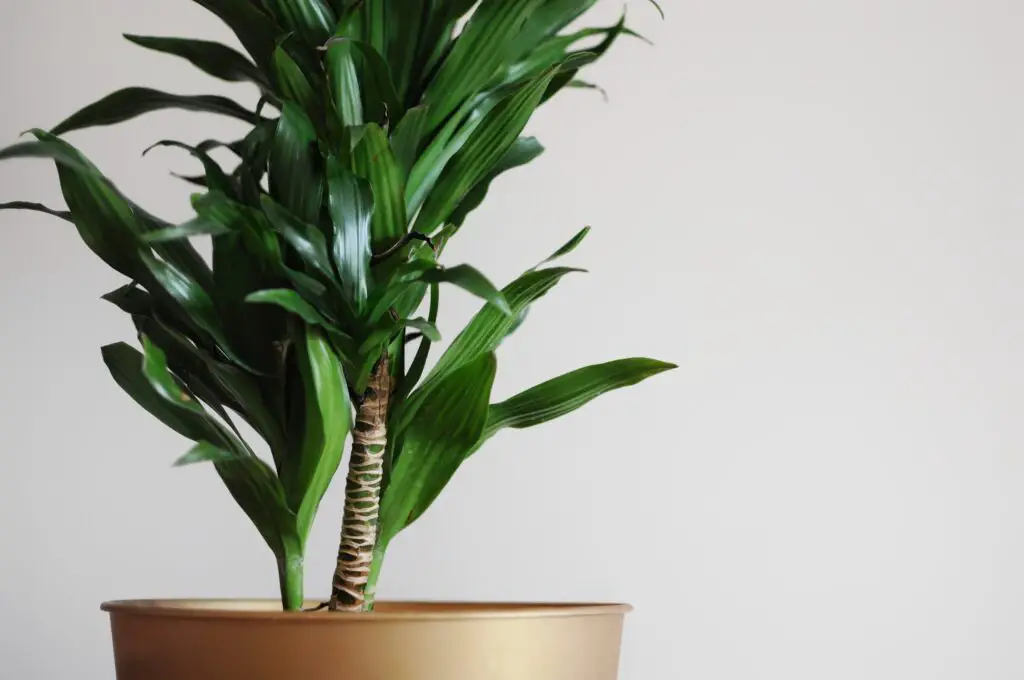
- Common Name: Cornstalk Dracaena, Corn plant, Ribbon plant
- Family: Asparagaceae
- Height & Spread: 3-15 feet (0.9-4.5 m) tall and 1-5 feet (0.3-1.5 m) wide
- Sun Exposure: Partial shade
- Soil Type: Moist, well-draining, rich
- Watering: Moderate, once weekly
- Toxicity: Mild
The cornstalk dracaena has corn-like, variegated foliage and fragrant, white or red flowers. The cornstalk leaves contain saponins, which are toxic to cats and dogs when ingested. Affected pets may exhibit vomiting, loss of appetite, and lethargy.
The plant can tolerate low-light conditions, but the leaves may lose their variegation, and the plant will not produce flowers.
I find that they’re more likely to bloom year-round when grown in a well-draining substrate rich in organic matter, placed in an area with bright, filtered light, and fed a phosphorus-rich fertilizer 2-3 times a year from early spring to early fall.
Croton (Codiaeum variegatum)
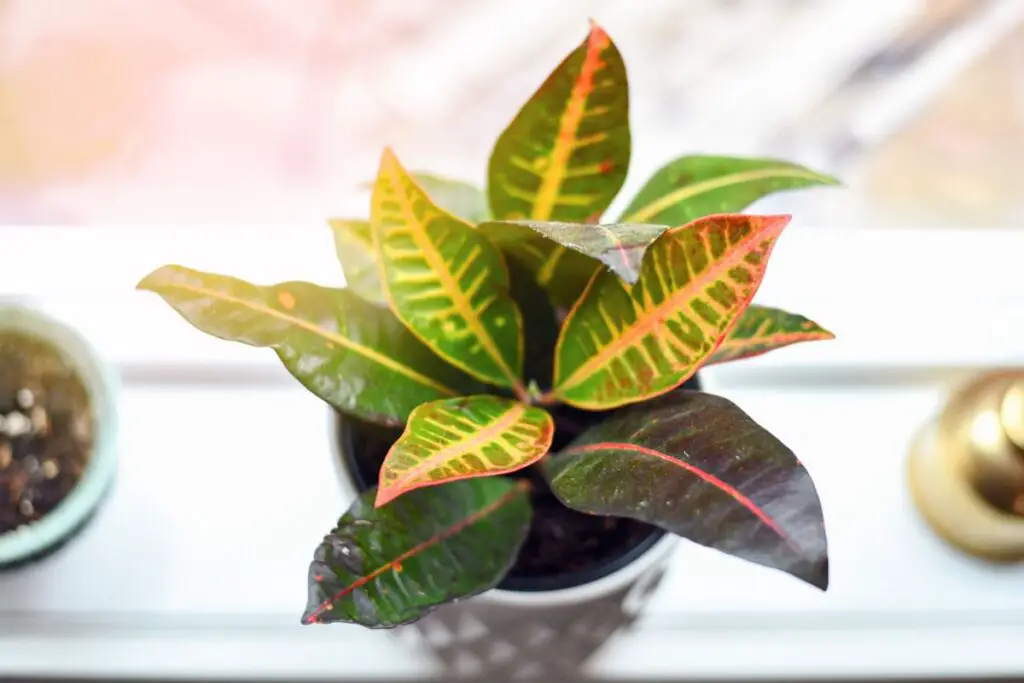
- Common Name: Croton
- Family: Euphorbiaceae
- Height & Spread: 2-10 feet (0.6-3 m) tall and 2-6 feet (0.6-1.8 m) wide
- Sun Exposure: Full or partial sun
- Soil Type: Moist, well-draining, rich
- Watering: Moisture-loving, once weekly
- Toxicity: Moderate
If you want a burst of color in your sunny living room, crotons are worth a shot. They have vibrant, variegated leaves that range from yellow and orange to red and purple.
Crotons require 4-6 hours of direct sunlight daily to maintain their colorful foliage. Without direct sunlight, the leaves revert to a slightly greener shade but they’re still a great contrast to solid-green foliage plants.
Wear gloves when pruning crotons because the milky sap can cause rashes or skin irritation upon contact. The leaves may also cause vomiting or stomachache when ingested so keep it away from kids or pets.
Dieffenbachia (Dieffenbachia seguine)
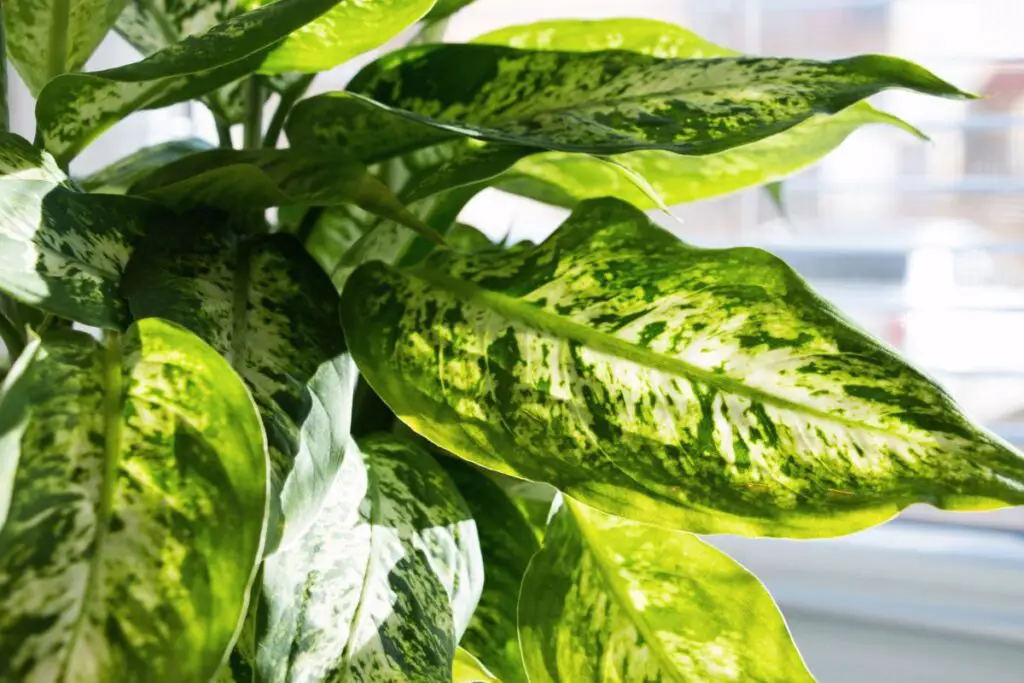
- Common Name: Dieffenbachia, Dumb cane
- Family: Araceae
- Height & Spread: 3-10 feet (0.9-3 m) tall and 2-3 feet (0.6-0.9 m) wide
- Sun Exposure: Partial to deep shade
- Soil Type: Moist, well-draining
- Watering: Moderate, once weekly
- Toxicity: Severe
Dieffenbachia is another low-light tolerant houseplant suitable for north-facing homes. The plant has remarkable foliage with a solid or brush-stroked creamy center and green margin. The foot-long (0.3 m) leaves will curl or dry up if exposed to direct sunlight, so aim for bright, indirect light for 10-12 hours daily.
It grows best in a soil mix with equal parts coarse sand, coco peat, and perlite. You may need to fertilize with a 3-1-2 NPK fertilizer in spring and summer for lush foliage.
The sap from the stem and leaves can cause skin irritation upon contact and severe, burning mouth or throat pain when ingested. It can be fatal for small cats and dogs and dangerous for young kids. Use gloves when pruning the plant, and keep it inaccessible to kids and pets.
English Ivy (Hedera helix)
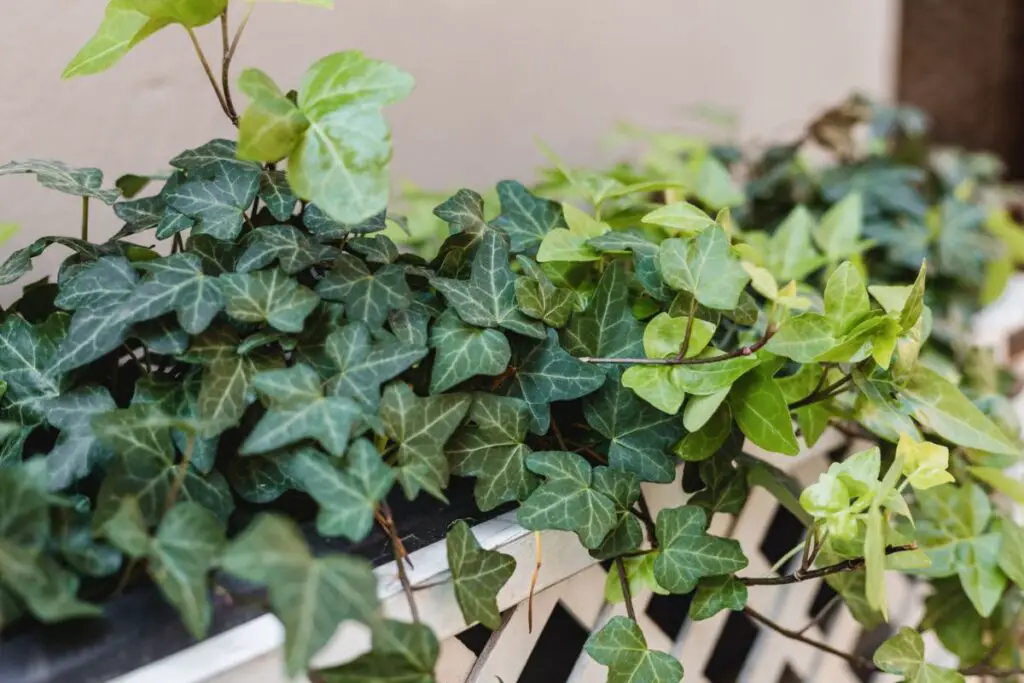
- Common Name: English ivy
- Family: Araliaceae
- Height & Spread: up to 80 feet (24 m) long and 50 feet (15 m) wide
- Sun Exposure: Full sun to deep shade
- Soil Type: Moist, well-draining, rich
- Watering: Moderate, once weekly
- Toxicity: Moderate
English ivy is an invasive, fast-growing vine when grown outdoors. You can control its spread indoors to make excellent wall-shelf decorations with trailing deep-green foliage. Alternatively, you can grow it in hanging baskets.
It’s also relatively easy to care for because it can tolerate various light and soil conditions. When grown in clayey or peaty soil, however, be careful not to overwater the plant to prevent root rot. The vines will feed off the moisture from the air through aerial roots.
All parts of the plant can be toxic to humans and pets. The sap can cause contact dermatitis, whereas ingesting the foliage and other plant parts can cause gastrointestinal problems. In large amounts, it can even affect the central nervous system (i.e., convulsions and hallucinations).
Fiddle Leaf Fig (Ficus lyrata)
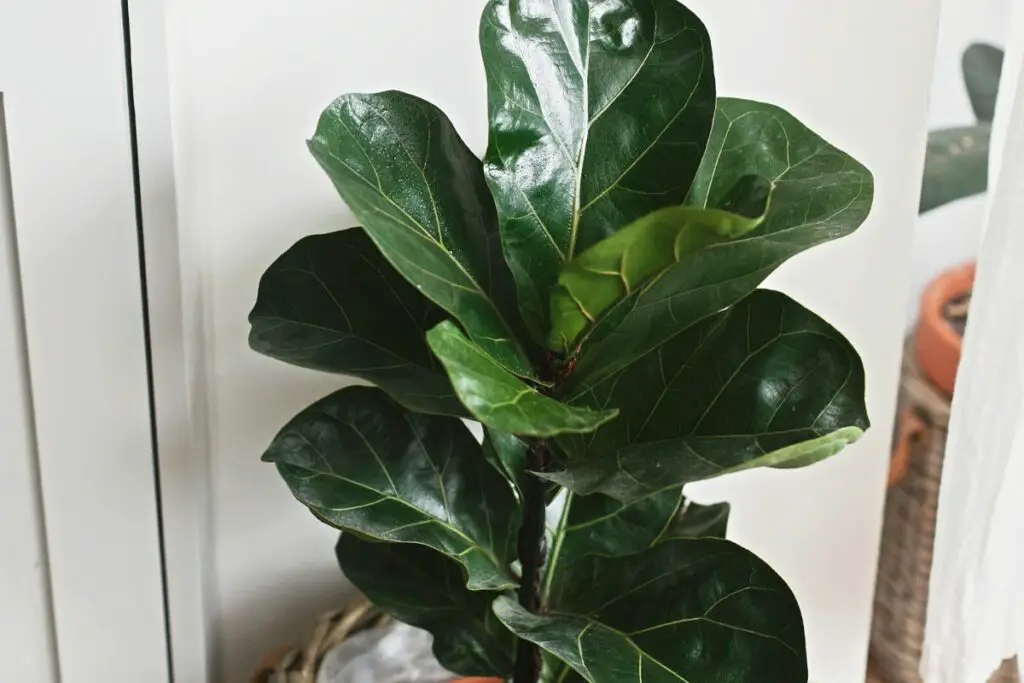
- Common Name: Fiddle leaf fig
- Family: Moraceae
- Height & Spread: Up to 10 feet (3 m) tall and 3 feet (0.9 m) wide indoors
- Sun Exposure: Partial sun to partial shade
- Soil Type: Moist, well-draining, rich
- Watering: Moderate, once weekly
- Toxicity: Mild
Fiddle leaf figs are excellent trees you can keep compact indoors. They like bright, filtered morning sun from an eastern window. Lower light conditions can cause leaning and legginess, whereas extended exposure to direct sunlight can burn the large leaves.
They need heavy pots to support the weight of the foliage. I recommend putting them on a plant caddy to move or rotate them more easily for even light exposure.
Plant sap from the stem or leaves can be toxic to cats and dogs when ingested. It can cause itchiness in the mouth or throat, stomachache, and vomiting.
Gardenia (Gardenia spp.)
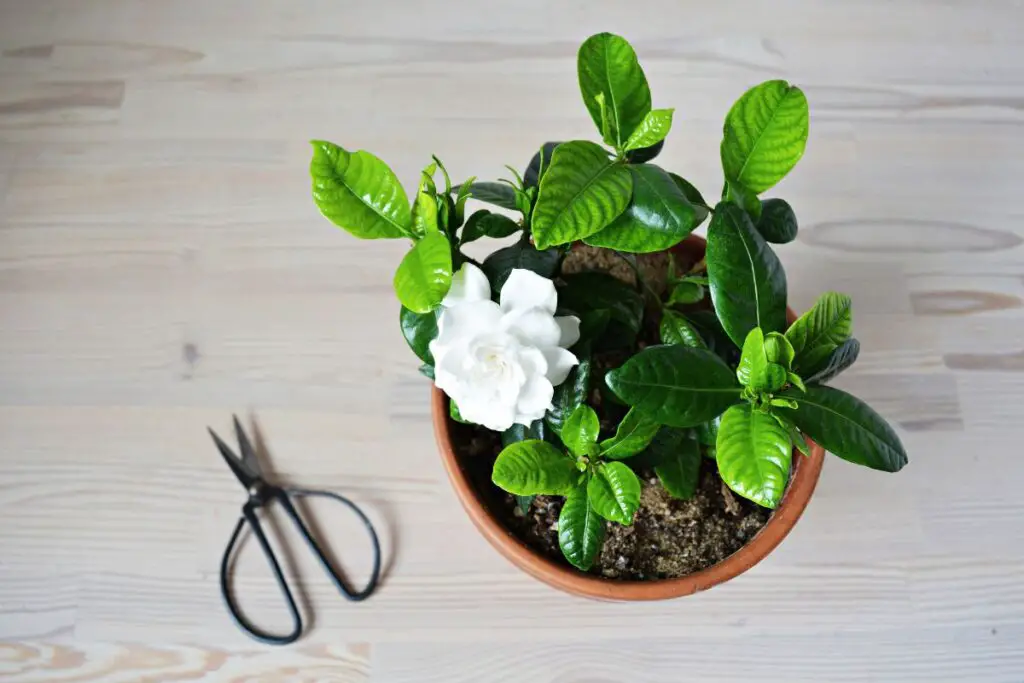
- Common Name: Gardenia, Cape jasmine
- Family: Rubiaceae
- Height & Spread: Up to 8 feet (2.4 m) tall indoors
- Sun Exposure: Partial sun to partial shade
- Soil Type: Loose, well-draining, rich
- Watering: Moderate, once weekly
- Toxicity: Non-toxic
Gardenias are famous for their fragrant white flowers and may require extra care indoors to encourage blooming. They tolerate partial shade (2-4 hours of direct sunlight) but do perfectly near a sunny eastern window. Just hang sheer curtains at midday in the summer.
Choose dwarf or short varieties, such as ‘White Gem’, ‘Crown Jewel’, and ‘Heaven Scent’ for indoor gardens. These varieties grow only 2-3 feet (0.6-0.9 m) tall and wide and can be conveniently placed next to a bright eastern window.
Fertilize the plant with a slow-release 10-10-10 fertilizer in early spring and a half-strength 4-6-4 liquid fertilizer a month later to promote flowering. Apply the liquid once every 2-3 weeks to encourage your plant to continue blooming from late spring to fall.
Haworthia (Haworthia spp. or Haworthiopsis spp.)
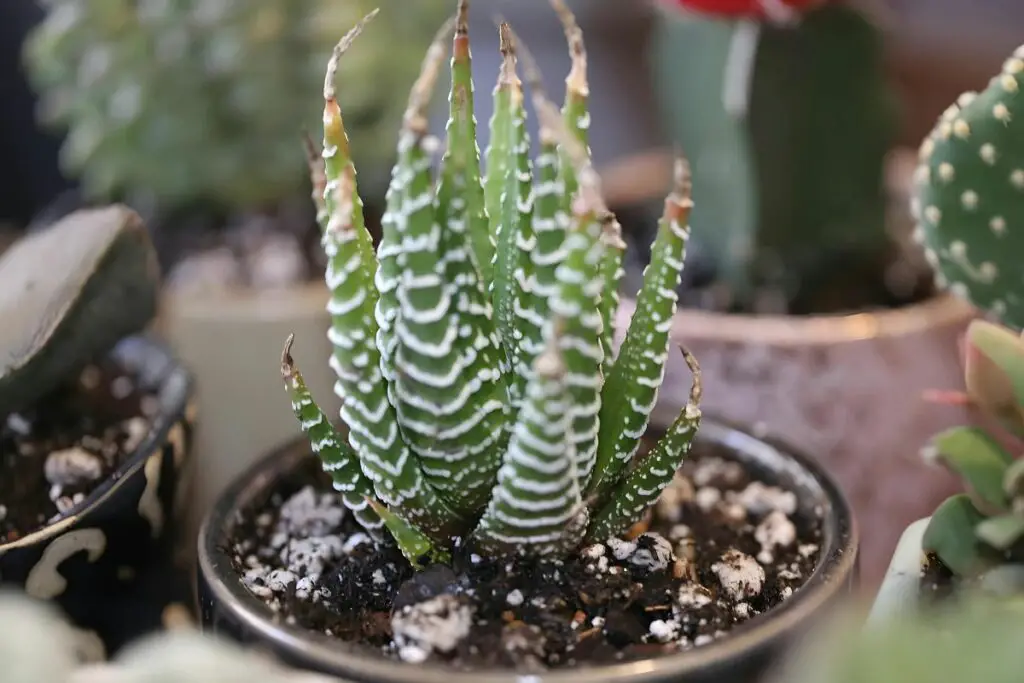
- Common Name: Haworthia, zebra plant, cushion aloe, star window
- Family: Asphodelaceae
- Height & Spread: 2-8 inches (5-20 cm) tall and 2-6 inches (5-15 cm) wide
- Sun Exposure: Full sun to partial shade
- Soil Type: Loose, well-draining
- Watering: Drought-tolerant
- Toxicity: Non-toxic
Haworthias are tiny succulents perfect for tabletops and work desks. Unlike most cacti and succulents, haworthias grow well in partial shade because they’re shaded by taller plants in their native habitat.
Plant haworthias in loose soil mixes containing 60-70% coarse sand and perlite/pumice and place them next to a bright eastern window. If you have western or southern windows, place the plants 4-8 feet (1.2-2.4 m) away or hang sheer curtains.
These plants grow slowly and can be propagated from offsets, leaf or stem cuttings, or seeds. Offsets or pups are miniature versions of the mature plant and have their own root systems, making them the most practical way of propagation.
Jade Plant (Crassula ovata)
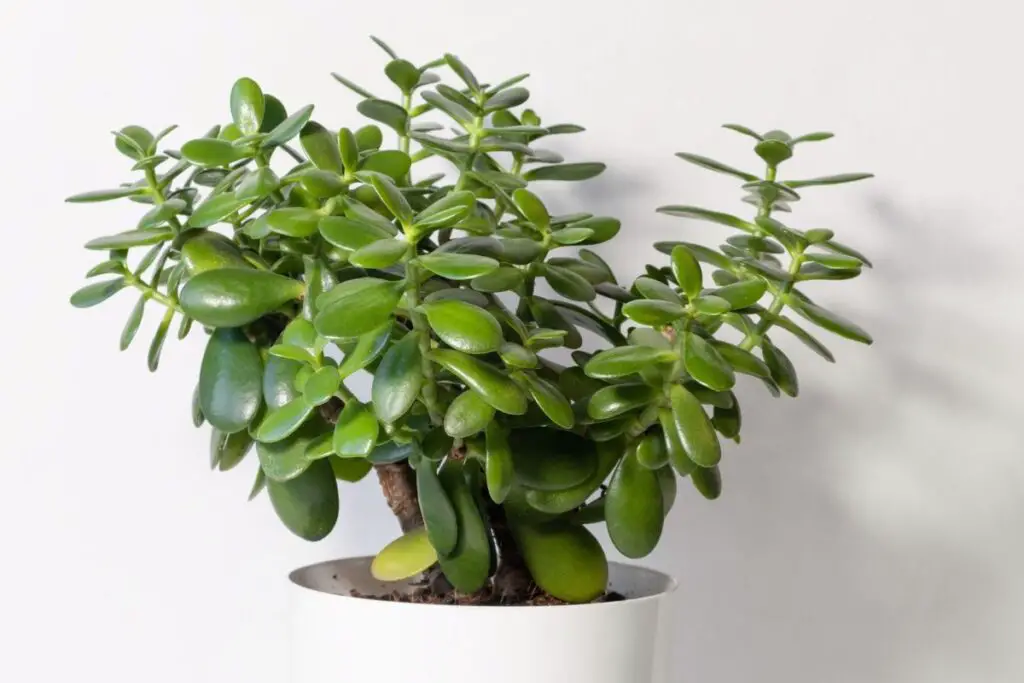
- Common Name: Jade plant, Money plant
- Family: Crassulaceae
- Height & Spread: 3-6 feet (0.9-1.8 m) tall and 2-3 feet (0.6-0.9 m) wide
- Sun Exposure: Full to partial sun
- Soil Type: Loose, fast-draining
- Watering: Drought-tolerant, once every 2-3 weeks (10-14 days in summer)
- Toxicity: Mild
Jade plants are resilient succulents that can live for several decades and are usually passed on from one generation to the next. They symbolize good fortune because of their evergreen, fleshy, and coin-shaped leaves.
They like at least 4 hours of direct sunlight—preferably from an eastern window. Too much sunlight will cause red tips on the green leaves. They also prefer infrequent watering. Over- or underwatering and incorrect light intensity are the primary causes of yellowing leaves.
Their plump, coin-shaped leaves may be attractive to small kids and pets. However, ingesting unprocessed leaves can be mildly toxic and cause stomachache, vomiting, and unsteady gait.
Lipstick Echeveria (Echeveria agavoides)
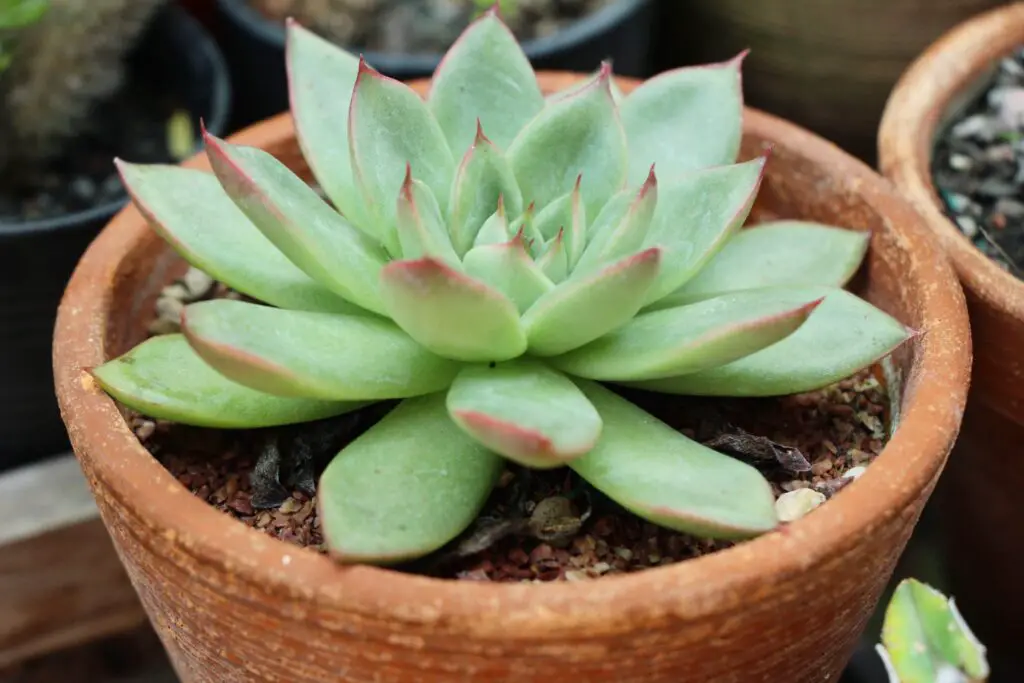
- Common Name: Lipstick echeveria, Molded wax agave
- Family: Crassulaceae
- Height & Spread: 3-6 inches (7.6-15 cm) tall and wide
- Sun Exposure: Full sun to partial shade
- Soil Type: Loose, fast-draining
- Watering: Drought tolerant, once every 2-3 weeks
- Toxicity: Non-toxic
Lipstick echeveria got its name from its red leaf tips, which is a stress response to prolonged exposure to direct sunlight. Although it may give your plant a distinct charm, consider giving it relief from the scorching midday sun to prevent browning.
As a succulent, lipstick echeveria also prefers loose, fast-draining soil (standard succulent mix), at least 4 hours of morning sun, and infrequent watering. Avoid overwatering to protect the shallow, fibrous roots.
When satisfied, the plant may produce yellow or red flowers on foot-long stalks in the summer. It’s also easy to propagate because it produces offsets beside the rosette-shaped mother plant.
Lucky Bamboo (Dracaena sanderiana)
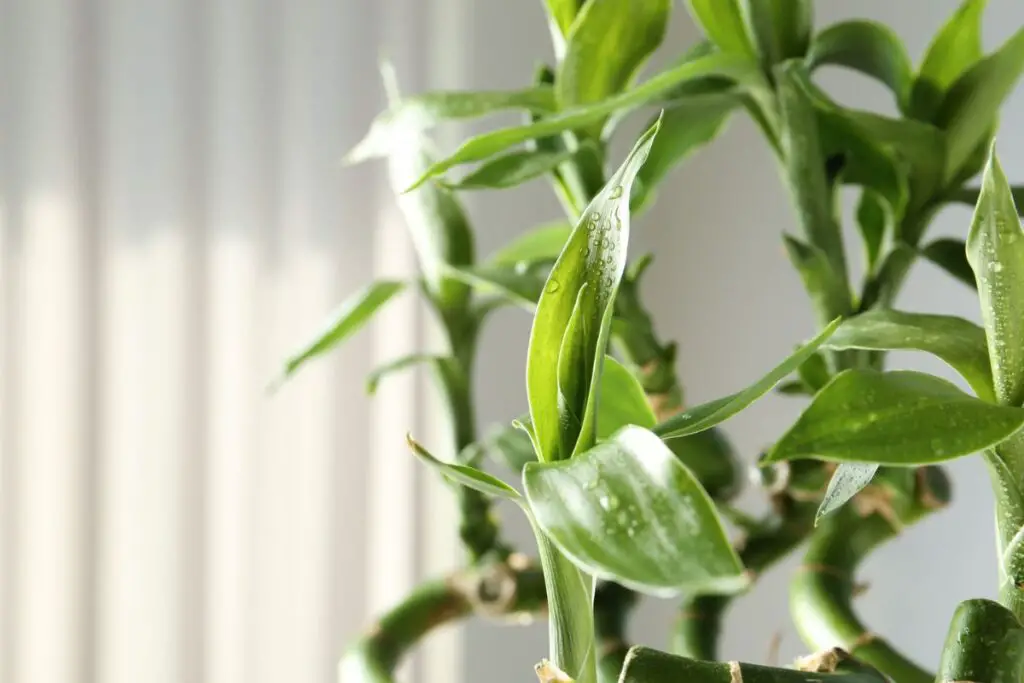
- Common Name: Lucky bamboo, Ribbon plant
- Family: Asparagaceae
- Height & Spread: 3-5 feet (0.9-1.5 m) tall and wide
- Sun Exposure: Partial to deep shade
- Soil Type: Moist, well-draining, rich
- Watering: Moderate, once weekly
- Toxicity: Mild
The lucky bamboo got its common name from its upright, bamboo-like stems. You can grow them as annuals or short-lived perennials in filtered water with 3-1-2 or 10-10-10 fertilizer diluted to 10% or less. The water-fertilizer solution must be replaced weekly.
Mine lasted 5 years when planted in a well-draining potting mix rich in coco peat/peat moss and compost, but it started losing vigor (with fewer leaves) in the following years.
The lanceolate leaves contain saponin, which can cause vomiting and loss of appetite when ingested by humans, cats, and dogs.
Majesty Palm (Ravenea rivularis)
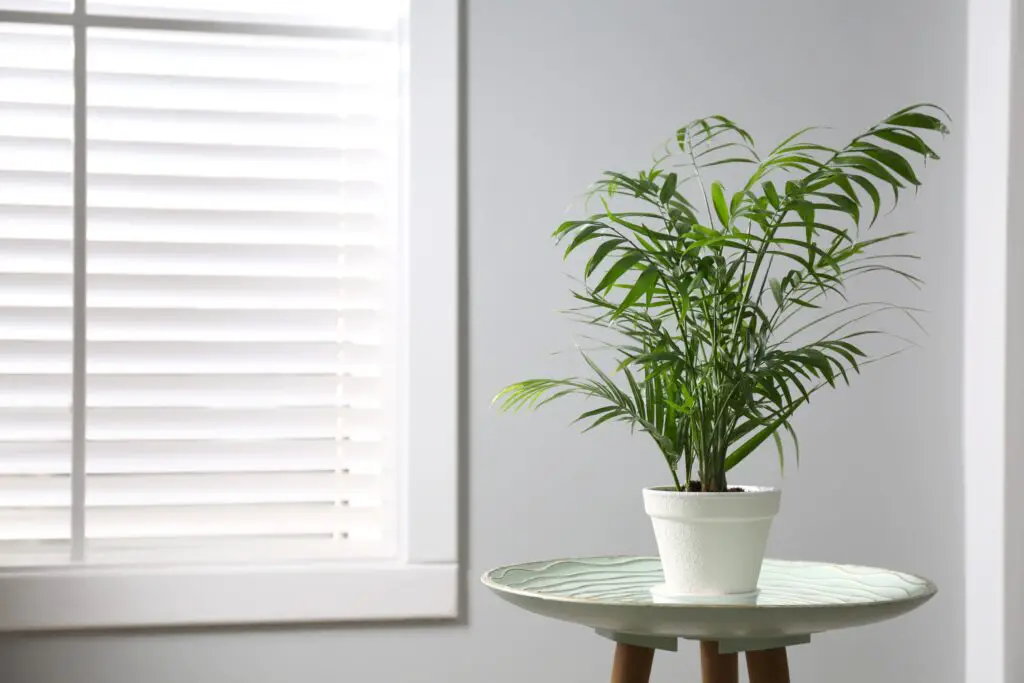
- Common Name: Majesty palm, Majestic palm
- Family: Arecaceae
- Height & Spread: up to 6 feet (1.8 m) tall and 2 feet (0.6 m) wide indoors
- Sun Exposure: Full sun
- Soil Type: Moist, well-drained, rich
- Watering: Moisture-loving, once or twice weekly
- Toxicity: Non-toxic
Majesty palms originate from Madagascar and can bring a touch of the tropics into your home environment. They naturally grow in swamps or along river banks where the soil is rich in loam and sand.
Outdoors, majesty palms can reach up to 20 feet (6 m) tall, but you can keep them compact by planting them in heavy containers indoors. Fill the container with equal parts cactus mix/perlite, coco peat, and compost to mimic the moisture retention and drainage in their native habitat.
Place the pot on a caddy next to a sunny eastern or southern window so you can rotate it at watering, which can be done 1-2 times weekly. In moderate or indirect light conditions, you can water your plant deeply once a week. Don’t let the substrate dry out completely.
Money Tree (Pachira aquatica)
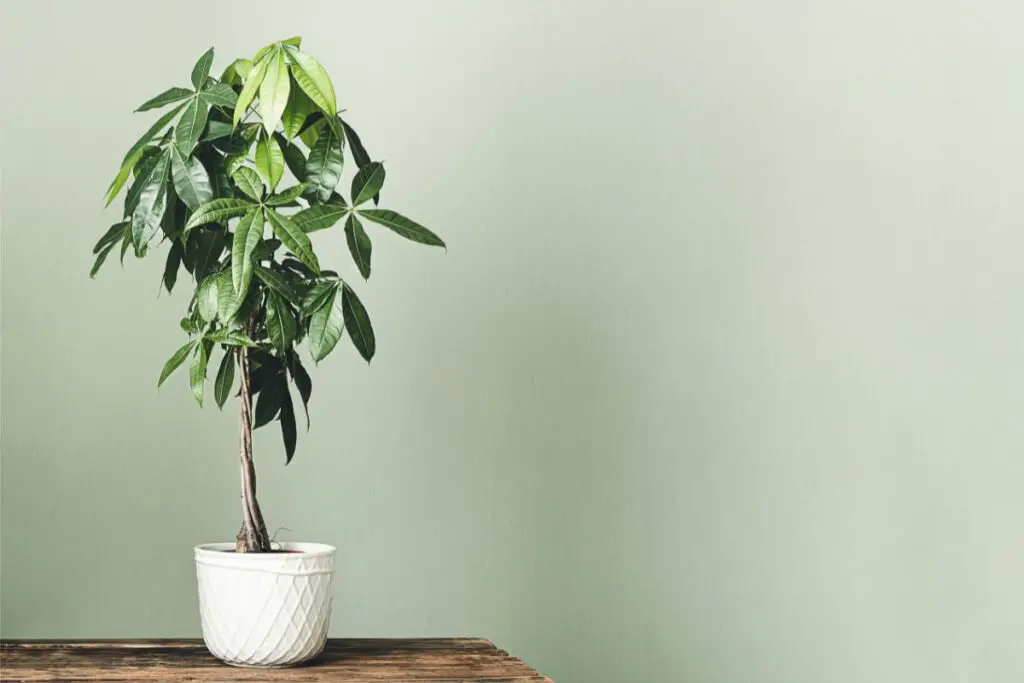
- Common Name: Money tree, Guiana chestnut, Fortune tree, Malabar chestnut
- Family: Malvaceae
- Height & Spread: 3-6 feet (0.9-1.8 m) tall indoors; the canopy can spread up to 3 feet (0.9 m) wide
- Sun Exposure: Full sun to partial shade
- Soil Type: Moist, well-draining, rich
- Watering: Moderate, once weekly
- Toxicity: Non-toxic
In the wild, the money tree can reach towering heights with a large, sturdy trunk. Indoor plants sold in gardening centers have lanky stems from multiple saplings braided or twisted together for a sturdier form and denser canopy.
You can also braid the plants by yourself by planting together 3-4 saplings about 2 feet (0.6 m) tall, with each stem about an inch (2.5 cm) in diameter. Braiding won’t hurt your money tree saplings. Instead, it can enhance the plant’s aesthetic appeal and physical stability.
Grow your plant in a soil mix containing equal parts perlite, coco peat, and compost. Water the soil when the top half is dry and don’t let it dry out completely. Place the pot next to an eastern window or in bright, indirect light from a western or southern window.
Monstera (Monstera deliciosa)
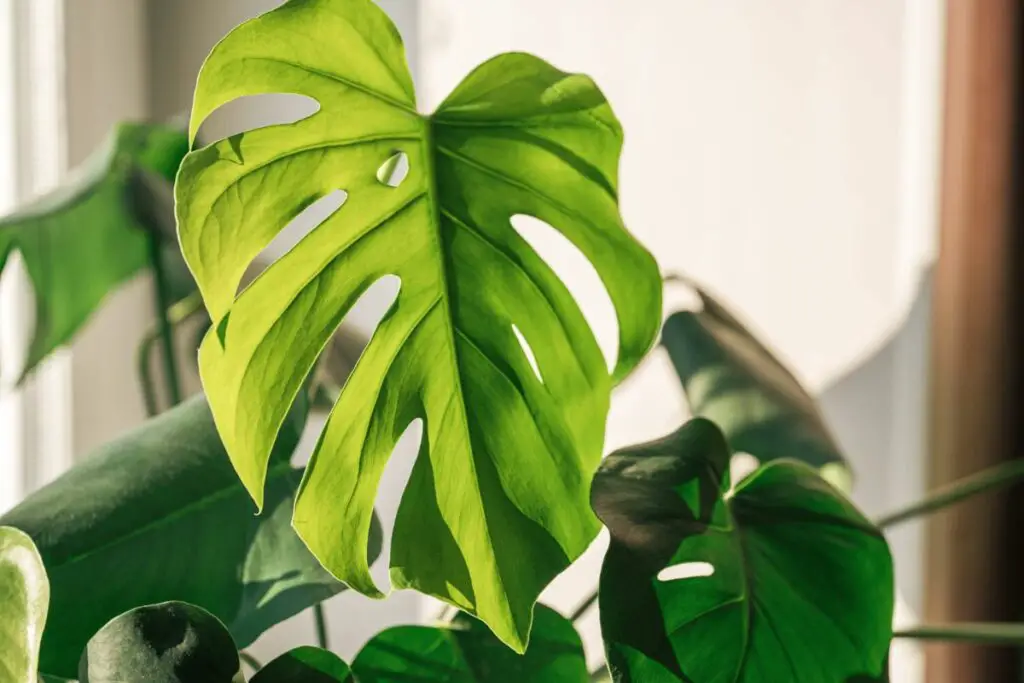
- Common Name: Monstera, Swiss cheese plant, Split-leaf philodendron
- Family: Aracea
- Height & Spread: Up to 10 feet (3 m) long indoors
- Sun Exposure: Dappled sun or partial shade
- Soil Type: Moist, well-draining
- Watering: Moderate, once weekly
- Toxicity: Mild
Monstera (or Swiss cheese plant) is popular for its large, fenestrated leaves. Its climbing nature makes it suitable for growing on moss poles and can give your home a jungle vibe.
Plants without vertical support need a high-quality substrate containing equal parts peat moss/coco peat and compost. To improve drainage, add 10-25% perlite. You can place your plant a few feet (0.6+ m) from a curtained eastern window and water it once a week.
All parts of the plant can cause mild oral irritation when ingested and the sap from the leaves and stems may cause contact dermatitis. Keep the plant away from kids and pets and use gloves when pruning or collecting cuttings.
Nerve Plant (Fittonia albivenis)
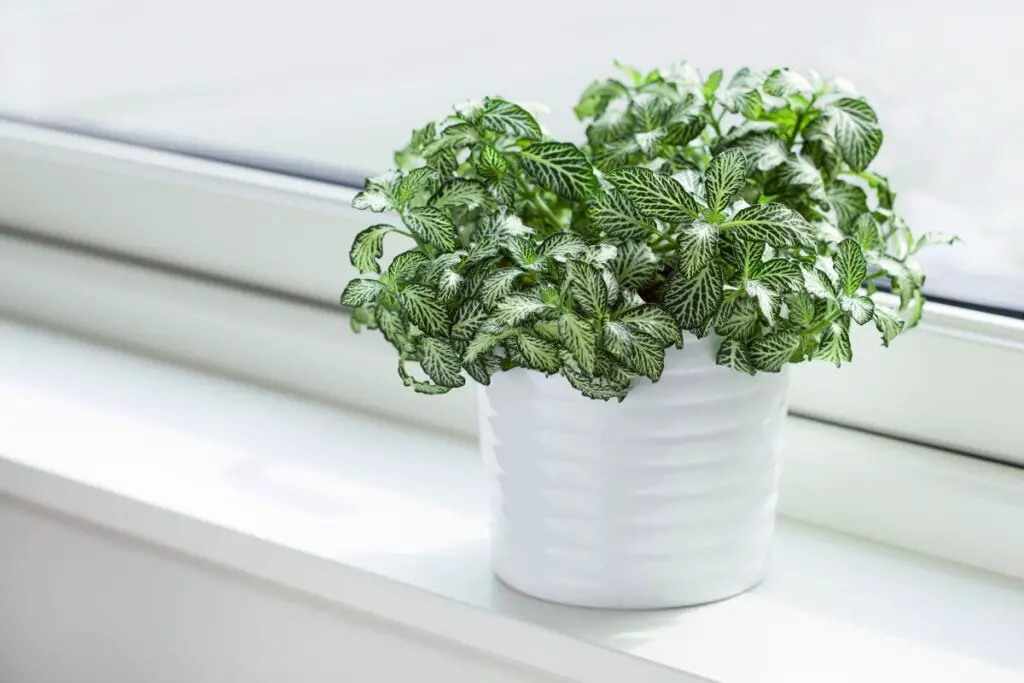
- Common Name: Nerve plant, Jewel plant, Silver nerve
- Family: Acanthaceae
- Height & Spread: 3-8 inches (7.6-20 cm) tall and 6-12 inches (15-30 cm) wide
- Sun Exposure: Partial to deep shade
- Soil Type: Moist, well-draining
- Watering: Moderate, once weekly
- Toxicity: Non-toxic
The nerve plant was named and became famous for its green leaves with intricate silver or pink venations similar to nerve endings. Its vibrant leaves can add color to low-light areas in your home. It can grow alongside African violets and Chinese evergreens.
It grows well in a coco peat-perlite mix and requires watering when the top inch (2.5 cm) is dry. The leaves will droop or wilt when the soil is allowed to dry out.
Nerve plant roots are shallow and fibrous. They’re susceptible to rot when kept in soggy soil, so use breathable pots with drainage holes to remove excess moisture.
Parlor Palm (Chamaedorea elegans)
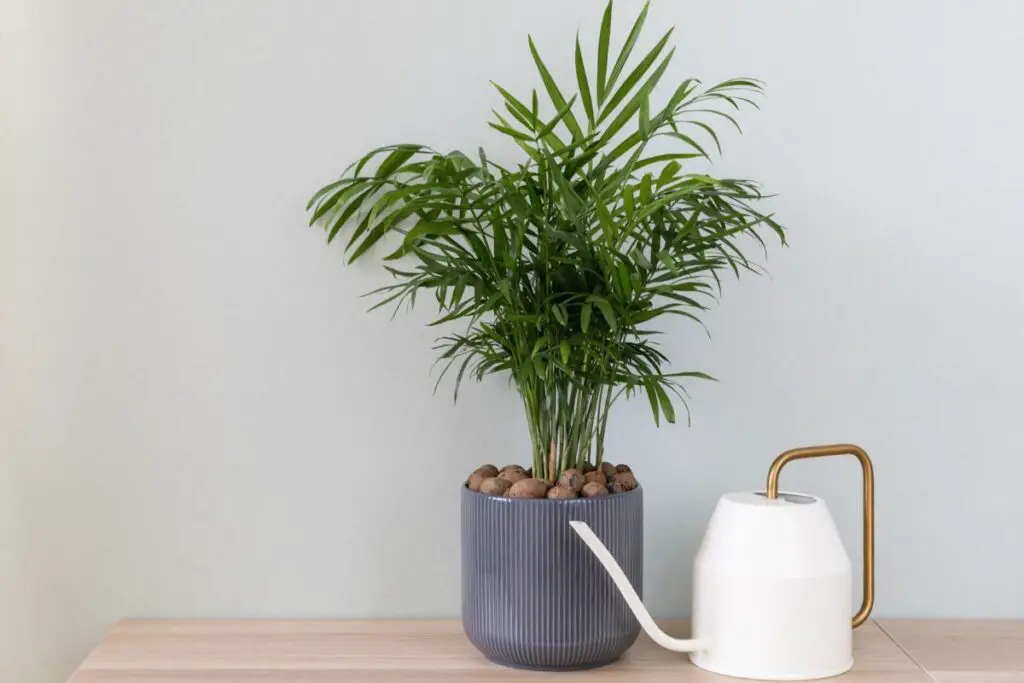
- Common Name: Parlor palm, Neanthe bella palm
- Family: Arecaceae
- Height & Spread: 3-5 feet (0.9-1.5 m) tall and 2-3 feet (0.6-0.9 m) wide
- Sun Exposure: Partial to deep shade
- Soil Type: Moist, well-drained, rich
- Watering: Moderate, once weekly
- Toxicity: Non-toxic
Parlor palm got its name from its widespread use in parlors or living spaces since the early 19th century. This palm tree is popular for indoor use because of its deep green foliage and compact size that rarely goes beyond 5 feet (1.5 m) indoors.
It’s also low-maintenance, and you can create an easy-to-follow plant care schedule. Parlor palms can sit comfortably in the corner of the living room, which receives filtered light throughout the day.
They thrive with weekly watering from early spring to early fall and feedings of 3-1-2 fertilizer in spring and summer. Increase the watering interval to once every 2-4 weeks from late fall to winter to prompt your plant to enter dormancy, during which you can prune dried fronds.
Peace Lily (Spathiphyllum spp.)
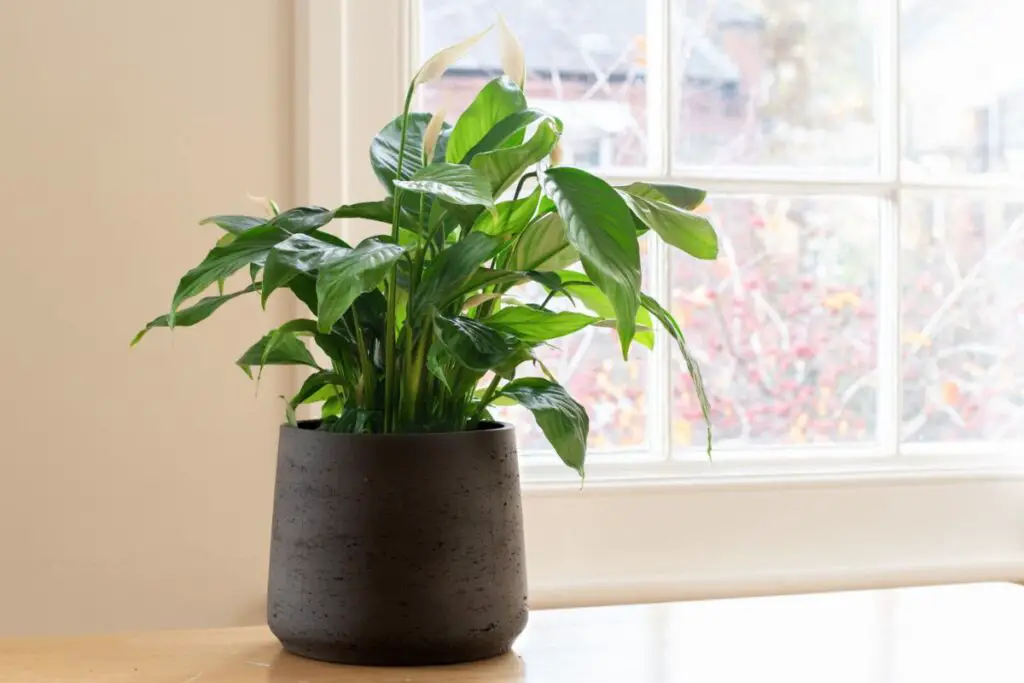
- Common Name: Peace lily
- Family: Araceae
- Height & Spread: 1-4 feet (0.3-1.2 m) tall and wide
- Sun Exposure: Partial to deep shade
- Soil Type: Moist, well-draining, rich
- Watering: Moderate, once weekly
- Toxicity: Moderate
Peace lilies are anthurium relatives with white spathes and deep green foliage. They’re more sensitive to direct sunlight, which can burn the bracts and leaves. They’re excellent companions to African violets because they bloom in similar light conditions.
Their showy flowers typically last 6-8 weeks before the bracts start shifting to pale green. While in bloom, they can add interest to your indoor space because they give off a mild and pleasant scent.
Like many Aracea members, peace lilies also contain calcium oxalate crystals, which can be toxic when consumed.
Pearl Echeveria (Echeveria elegans)
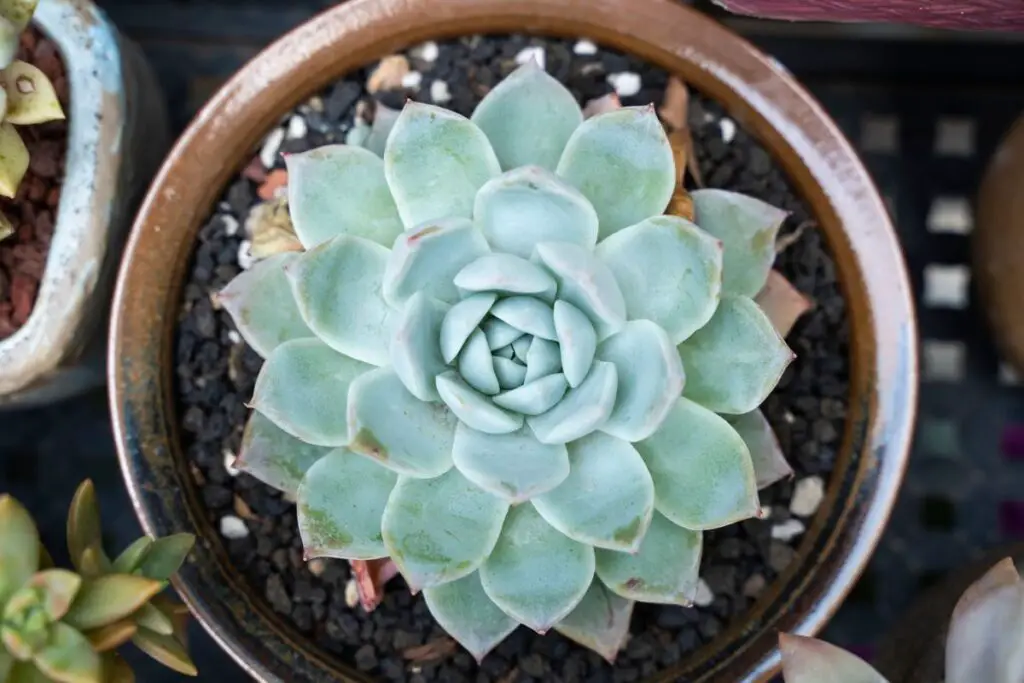
- Common Name: Pearl echeveria, Mexican rose
- Family: Crassulaceae
- Height & Spread: 2-6 inches (5-15 cm) tall and up to 20 inches (50 cm) wide
- Sun Exposure: Partial sun to partial shade
- Soil Type: Loose, well-draining
- Watering: Drought-tolerant, once every 10-14 days
- Toxicity: Non-toxic
Pearl echeverias are among my favorite sun-loving houseplants that grace my eastern window succulent space. They will also grow near a southern or western window with bright, indirect light.
These low-growing plants have fleshy, rounded leaves with tiny pointed tips. They form a rosette base for the foot-long, hook-shaped flower stalks that bloom in late winter or early spring until early summer.
They’re perfect for busy homeowners because they require infrequent watering and no added fertilizers when grown in loose potting mixes with 25% compost. Even when kept in such a laid-back care routine, they’ll bloom and produce offsets.
Heartleaf Philodendron (Philodendron hederaceum)
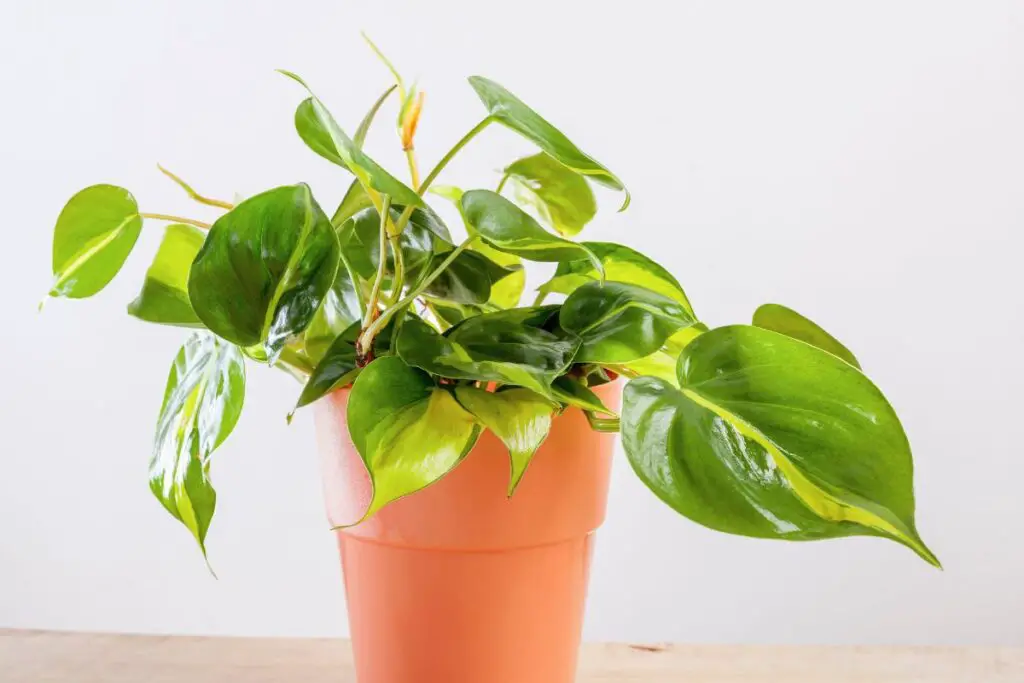
- Common Name: Heartleaf philodendron
- Family: Araceae
- Height & Spread: 10-20 feet (3-6 m) long and 3 feet (0.9 m) wide
- Sun Exposure: Dappled sun to deep shade
- Soil Type: Moist, well-draining, rich
- Watering: Moderate, once weekly with 60% humidity
- Toxicity: Mild
Heartleaf philodendrons are famous for their waxy, heart-shaped leaves that can reach up to a foot (30 cm) long.
They come in solid and variegated forms, which are both aesthetically pleasing as they trail down hanging baskets or overhead pots. You can also train the vines to grow along moss poles to keep them neat and organized.
To maintain the lush foliage, place them in a corner with filtered or bright, indirect light and humidity levels of around 60%. I recommend grouping them with fellow low-light, high-humidity growers like African violets, Chinese evergreens, and peace lilies.
Tree Philodendron (Philodendron selloum)
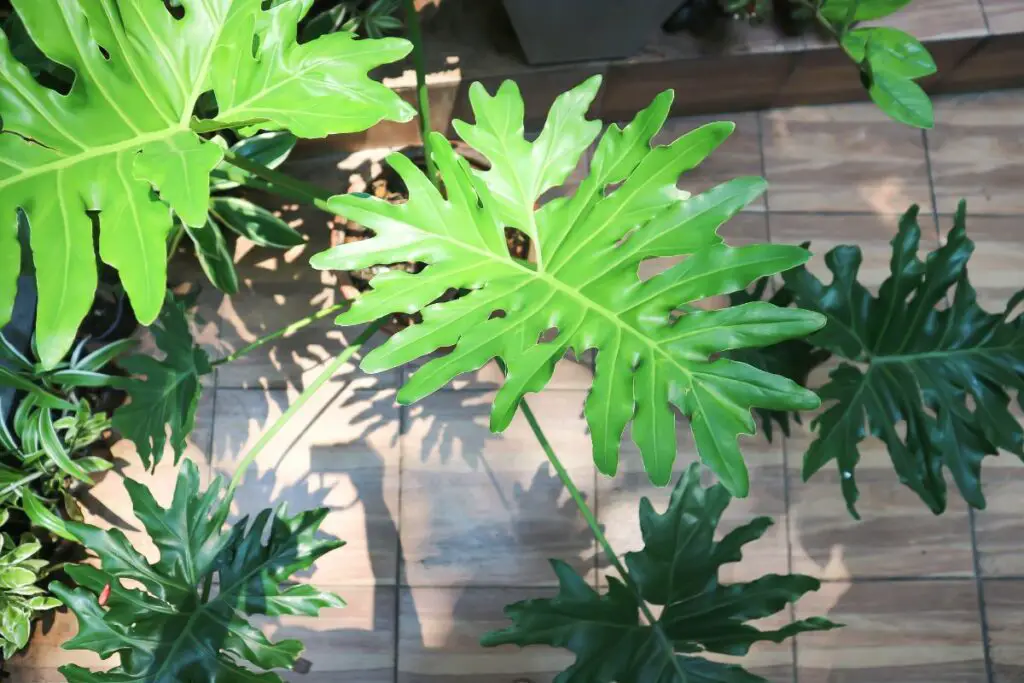
- Common Name: Tree philodendron
- Family: Aracea
- Height & Spread: 3-10 feet (0.9-3 m) tall trunk and up to 10 feet (3 m) wide foliage
- Sun Exposure: Partial sun to partial shade
- Soil Type: Moist, well-draining, rich
- Watering: Moderate, once weekly but with daily misting
- Toxicity: Mild
If you want a loud, tropical statement in your indoor garden, I recommend the tree philodendron. It has dense, deeply lobed leaves that grow 1-3 feet (0.3-0.9 m) long. It’s perfect as a centerpiece to a wide indoor space or a touch of life in a shady corner of the home.
A tree philodendron will grow well in a shady space if it receives low-intensity artificial light for 10-14 hours daily. Otherwise, some stems may grow longer than others, giving your plant an awkward shape.
Prune your plant in spring to maintain its shape, remove leggy growth, and discard old, discolored leaves.
Ponytail Palm (Beaucarnea recurvata)
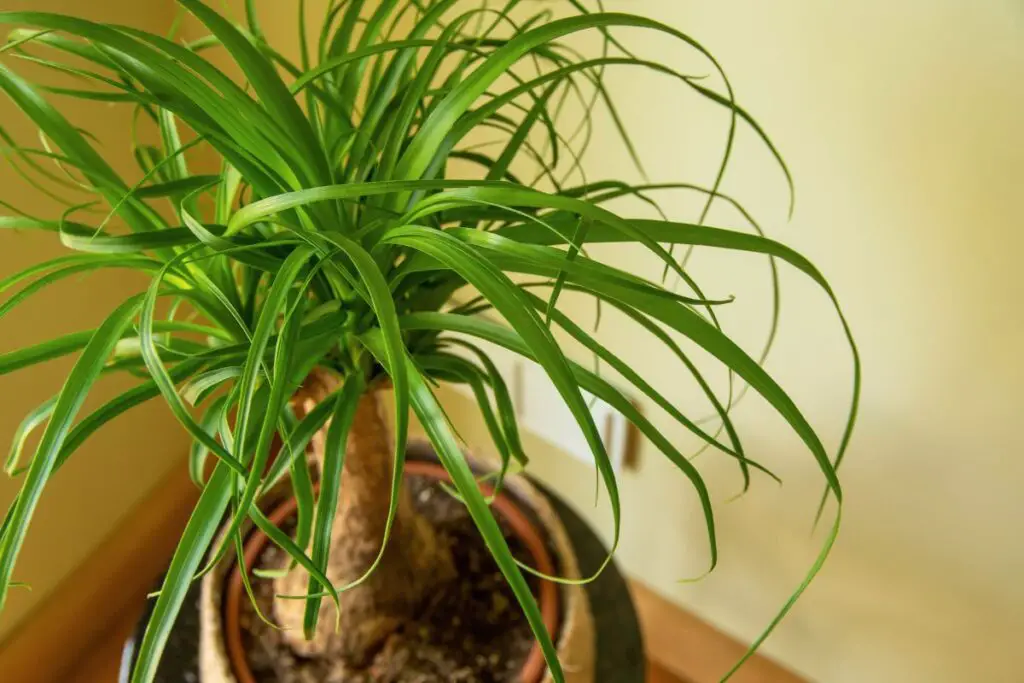
- Common Name: Ponytail palm
- Family: Asparagaceae
- Height & Spread: Up to 6 feet (1.8 m) tall indoors with a base trunk 12 inches (30 cm) in diameter
- Sun Exposure: Full sun to partial shade
- Soil Type: Loose, well-draining
- Watering: Drought tolerant, once every 2-3 weeks
- Toxicity: Non-toxic
Despite its name, the ponytail palm is not a true palm. It’s an interesting succulent with a palm-like appearance and a crown of flat, elongated leaves on top of a single or branched trunk.
It has lower maintenance needs than true palms, making it perfect for beginners. Its swollen trunk base stores moisture, granting the plant drought tolerance.
It’s also flexible with locations because it does well with six hours of direct sunlight or bright, indirect light all day. Its vibrant green leaves can grace your sunroom or add color to a corner several feet (+ 1.2 m) from a bright window.
Pothos (Epipremnum spp.)
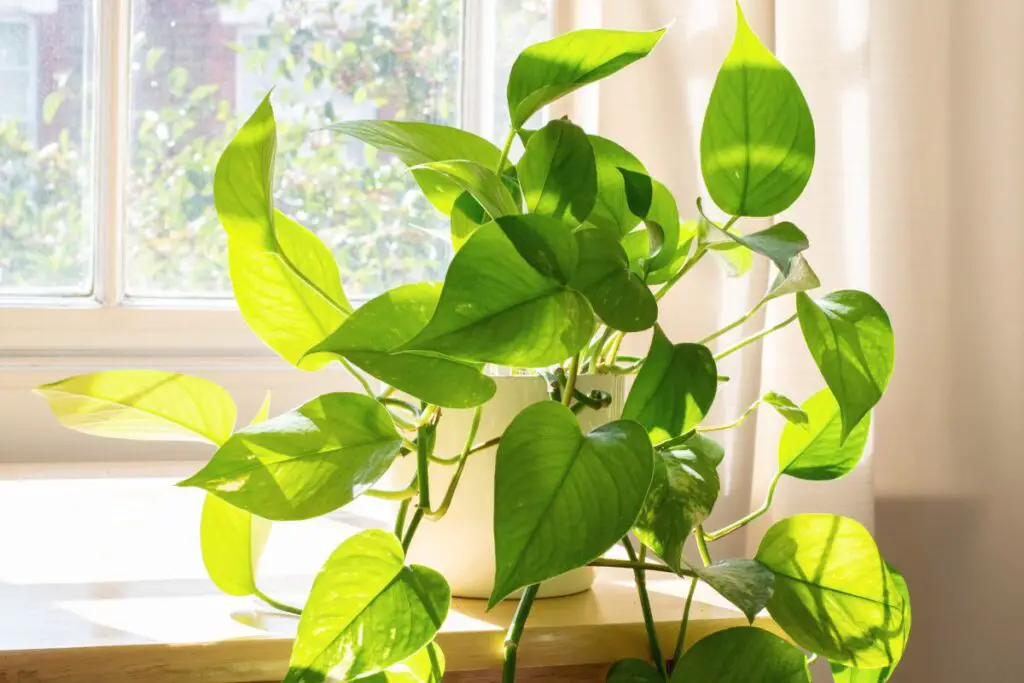
- Common Name: Pothos, Devil’s ivy
- Family: Araceae
- Height & Spread: 6-10 feet (1.8-3 m) long and 3 feet (0.9 m) wide indoors
- Sun Exposure: Partial shade
- Soil Type: Moist, well-drained
- Watering: Moderate, once every 1-2 weeks at high humidity (60% or more)
- Toxicity: Mild
Pothos is one of the most popular low-light foliage plants in the US. Depending on the variety, it has heart-shaped, variegated leaves ranging from 6-24 inches (15-60 cm) long.
You can place small-leaf varieties in hanging baskets or overhead pots for a beautiful trail of leaves. On the other hand, I recommend training large-leaf varieties along moss poles to help the plant support the weight of the foliage.
Switch on a humidifier in the room to prevent the leaves from drying out. You can also mist or wipe the leaves with a moist cloth regularly to prevent dust buildup and improve humidity—although briefly.
Prayer Plant (Calathea spp.)
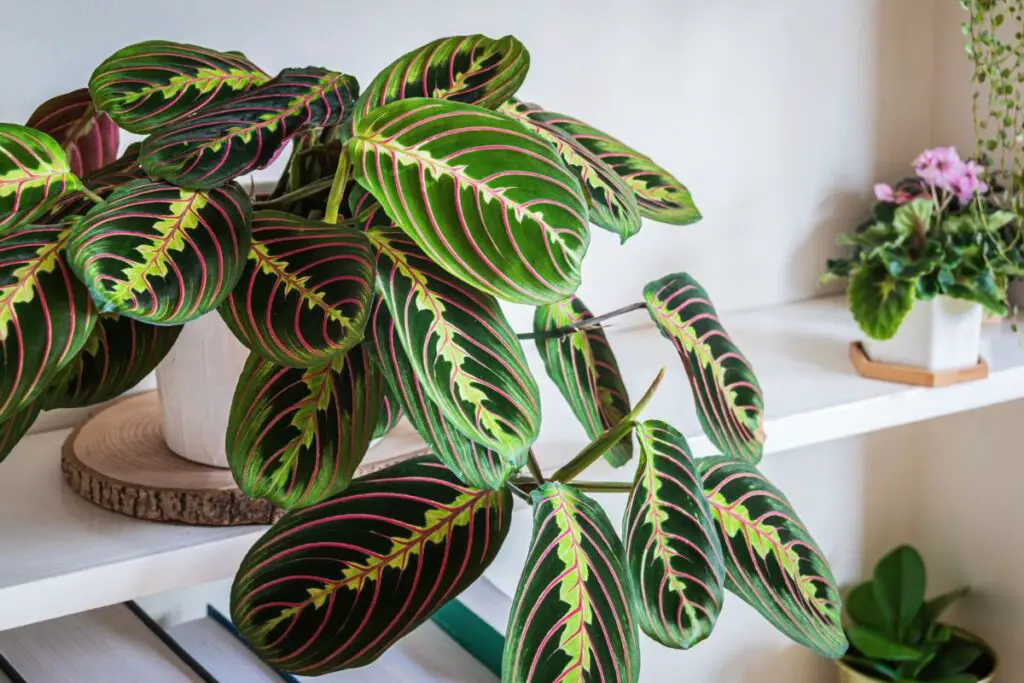
- Common Name: Calathea, Prayer plant, Rattlesnake plant, Zebra plant
- Family: Marantaceae
- Height & Spread: 2-4 feet (0.6-1.2 m) tall and wide
- Sun Exposure: Partial sun to partial shade
- Soil Type: Moist, well-draining, rich
- Watering: Moisture-loving, keep the soil evenly moist but not soggy
- Toxicity: Non-toxic
Calatheas are among the most fascinating works of nature in the plant kingdom. These plants have striking foliage with distinct white, yellow, or pink markings against a deep green background.
The leaves also open with daylight and fold at night, earning them the nickname ‘prayer plant.’ In reality, it’s a nyctinastic behavior that protects them from nighttime pests. Place your calatheas in bright, indirect light to enjoy this behavior and retain the attractive markings.
These plants like moist soil but the roots will likely rot in constantly wet soil. Add 20-30% coarse sand or perlite into the potting mix to enhance drainage and reduce watering frequency in low-light conditions, high humidity, or winter.
Rubber Plant (Ficus elastica)
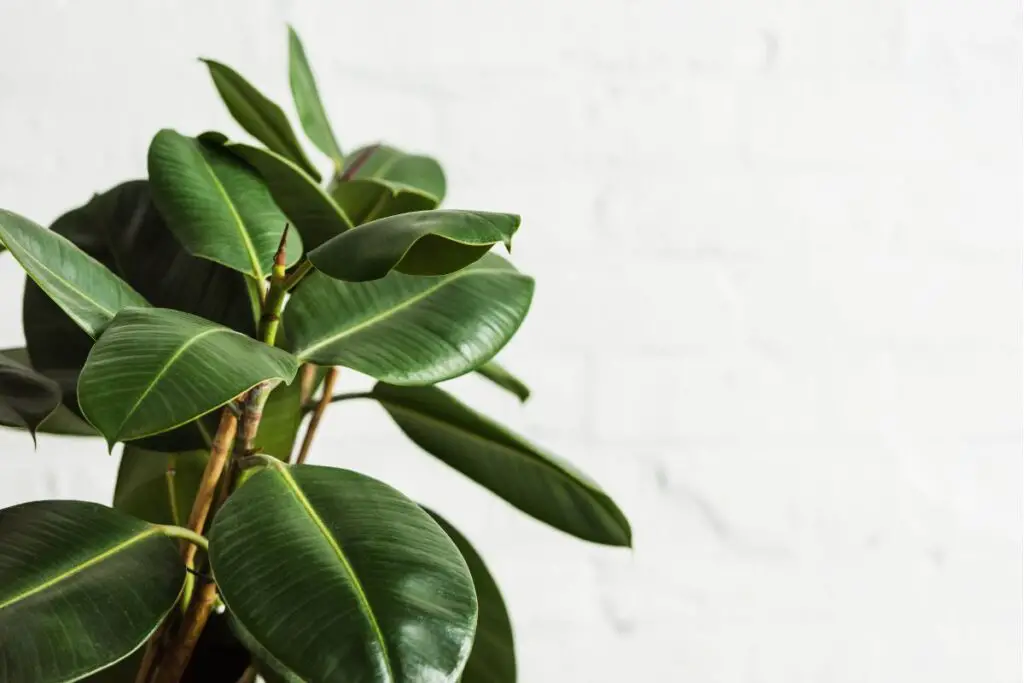
- Common Name: Rubber plant, Rubber fig, Rubber tree
- Family: Moraceae
- Height & Spread: 6-10 feet (1.8-3 m) tall and 2-3 feet (0.6-0.9 m) wide indoors
- Sun Exposure: Partial to dappled sun
- Soil Type: Loose, well-draining, rich
- Watering: Moderate, once weekly
- Toxicity: Mild (skin irritation from sap)
Rubber plant is another amazing tree you can grow successfully indoors. It’s famous for its waxy emerald or burgundy leaves and low-maintenance requirements. It has a rapid growth rate and can put on up to 2 feet (0.6 m) in one growing season.
All it needs are bright morning sunlight, loose soil, and deep watering once the top half of the mix is dry. Under these conditions, you’ll see a bushy growth with multiple stems sprouting from the ground.
Prune as needed only in late spring and limit the removal to a third of the plant’s volume. If you want a tree-like form, cut the flimsier stems down to the ground and keep the sturdiest trunk.
You can keep it compact by cutting off the top once it reaches your desired height. It will stop growing vertically and will start producing lateral branches.
Snake Plant (Dracaena trifasciata)
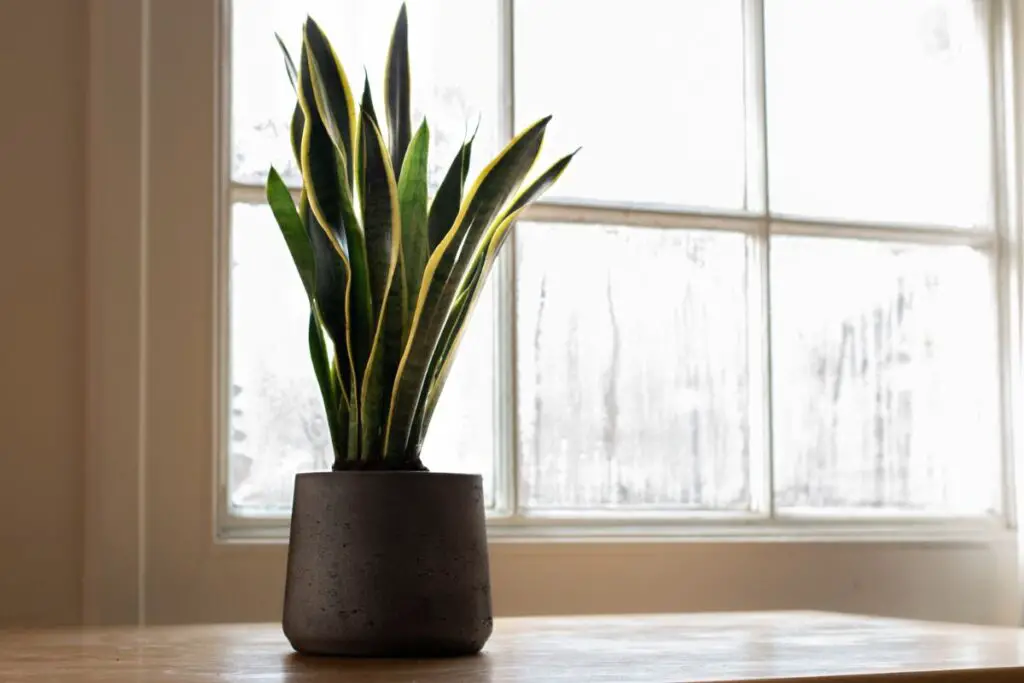
- Common Name: Snake plant, Mother-in-law’s tongue
- Family: Asparagaceae
- Height & Spread: 1-3 feet (0.3-0.9 m) tall and wide
- Sun Exposure: Full sun to partial shade
- Soil Type: Loose, well-draining
- Watering: Drought-tolerant, once every 2-3 weeks
- Toxicity: Mild
Snake plants are resilient and flexible succulents that can grow in any light conditions indoors or outdoors. As houseplants, they can sit next to a sunny window or in filtered light all day.
They have thick, tongue-like leaves that are either solid-green or variegated. The variegated types prefer bright light for distinct markings, so I place mine along with other succulents near an eastern window.
Adjust watering frequency accordingly based on where you place your plant. Those that grow in brighter light need more frequent watering to avoid brown leaf tips. Check that the top half of the pot is dry before watering because snake plants are vulnerable to overwatering.
Spider Plant (Chlorophytum comosum)
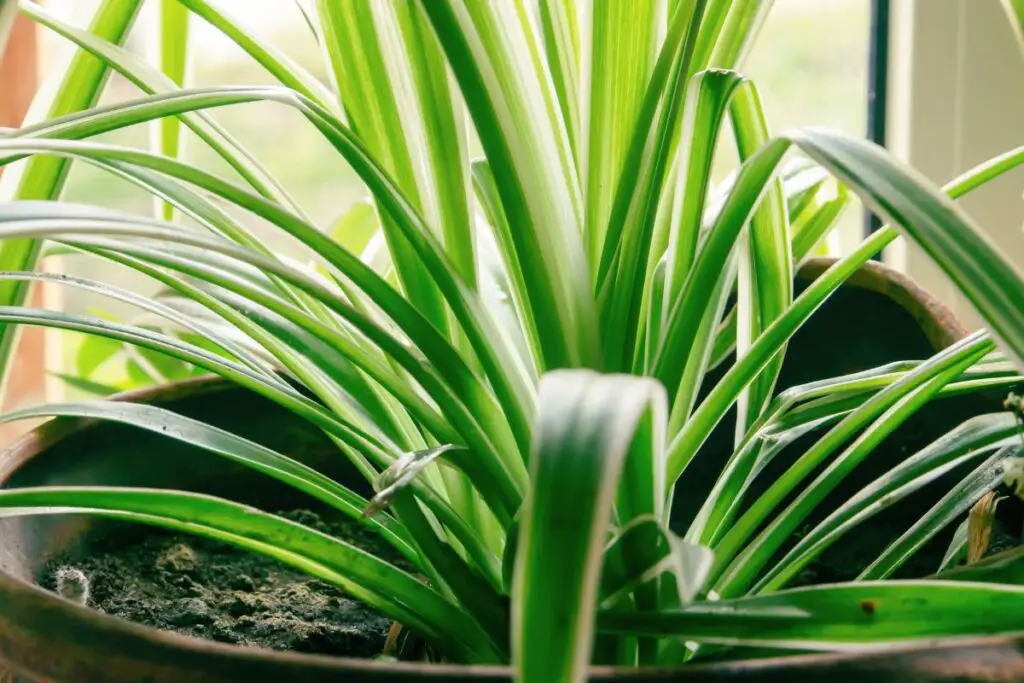
- Common Name: Spider plant
- Family: Asparagaceae
- Height & Spread: 1-2 feet (0.3-0.9 m) tall and 2-3 feet (0.6-0.9 m) wide
- Sun Exposure: Partial to deep shade
- Soil Type: Loose, well-draining, rich
- Watering: Drought-tolerant, once every 10-14 days
- Toxicity: Non-toxic
Spider plant is perfect if you’re new to houseplant care and would like a low-maintenance, resilient plant that can handle a bit of neglect. It has long variegated or solid green leaves that prefer bright, indirect light. Direct sunlight can burn and dry out the thin leaves.
It’s compact and versatile as you can grow them in small pots or hanging baskets. Let the fleshy roots mature and become potbound before repotting in spring in fresh, fertile soil—typically every two years.
Interestingly, a slightly stressed spider plant will gladly reproduce through offsets, especially when slightly rootbound. A little drought and brighter (indirect) light prompted my spider plants to reproduce. Conversely, avoid overwatering stress as it can kill the roots.
String of Pearls (Senecio rowleyanus)
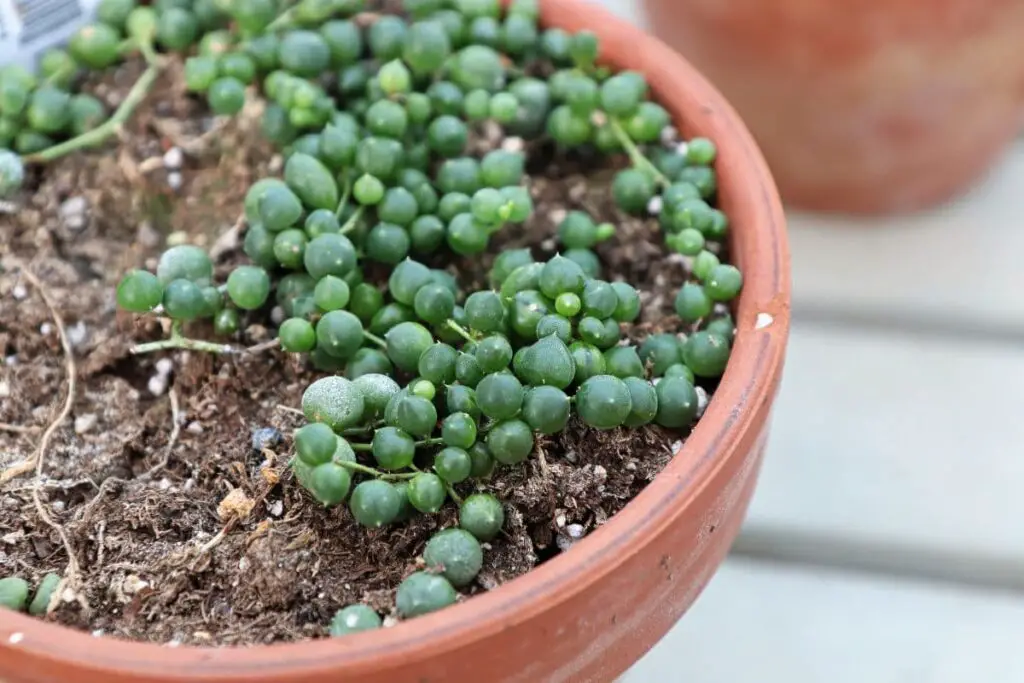
- Common Name: String of pearls
- Family: Asteraceae
- Height & Spread: 1-3 feet (0.3-0.9 m) long and 1-2 feet (0.3-0.6 m) wide
- Sun Exposure: Dappled sun or partial shade
- Soil Type: Loose, well-draining
- Watering: Drought-tolerant, once every 10-14 days
- Toxicity: Mild for humans but can be severe for pets
The string of pearls plant makes a lovely bead-like curtain when planted in hanging baskets or overhead pots. Their tiny, rounded leaves look like beads and the vines can grow up to 3 feet (0.9 m) long.
The succulent leaves store water, making the plant drought-tolerant. They may release liquid and become sticky when there’s excess moisture in the soil. Chronic overwatering can kill the shallow roots so be sure the top half of the pot is dry before watering.
The plump leaves are also attractive to small children and pets. Unfortunately, ingesting large amounts of the sap from the leaves can cause severe gastrointestinal problems in pets and may sometimes lead to liver failure.
Tradescantia Zebrina (Tradescantia zebrina)
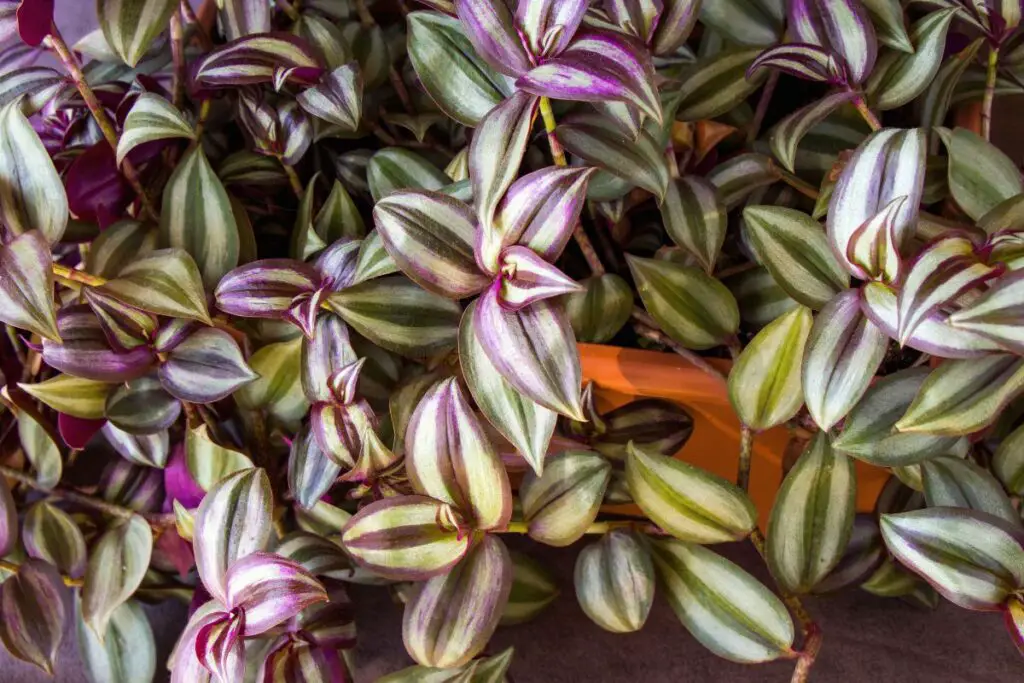
- Common Name: Inch plant, Wandering Jew
- Family: Commelinaceae
- Height & Spread: 0.5-1 foot (0.15-0.3 m) tall and 2-3 feet (0.6-0.9 m) wide
- Sun Exposure: Full sun to partial shade
- Soil Type: Moist, well-draining, rich
- Watering: Moderate, once weekly if in pots
- Toxicity: Mild (skin irritation)
If you’re interested in colorful trailing plants, the inch plant’s striped purple-and-green leaves will fascinate you. This plant is often used as a groundcover outdoors, but it also makes excellent hanging basket decorations or potted plants indoors.
They exhibit distinct coloration in direct morning sunlight during spring, but the high temperatures and intense light in the summer can scorch the leaves. You can hang sheer curtains at midday to filter the light or move the plant to bright, indirect light in the summer.
Inch plants like moist soil and the leaves will turn brown when underwatered in direct sunlight. Water your plants as soon as the top 1-2 inches (2.5-5 cm) of the soil is dry. That means you may need to water those in hanging baskets daily in the summer.
Wax Plant (Hoya spp.)
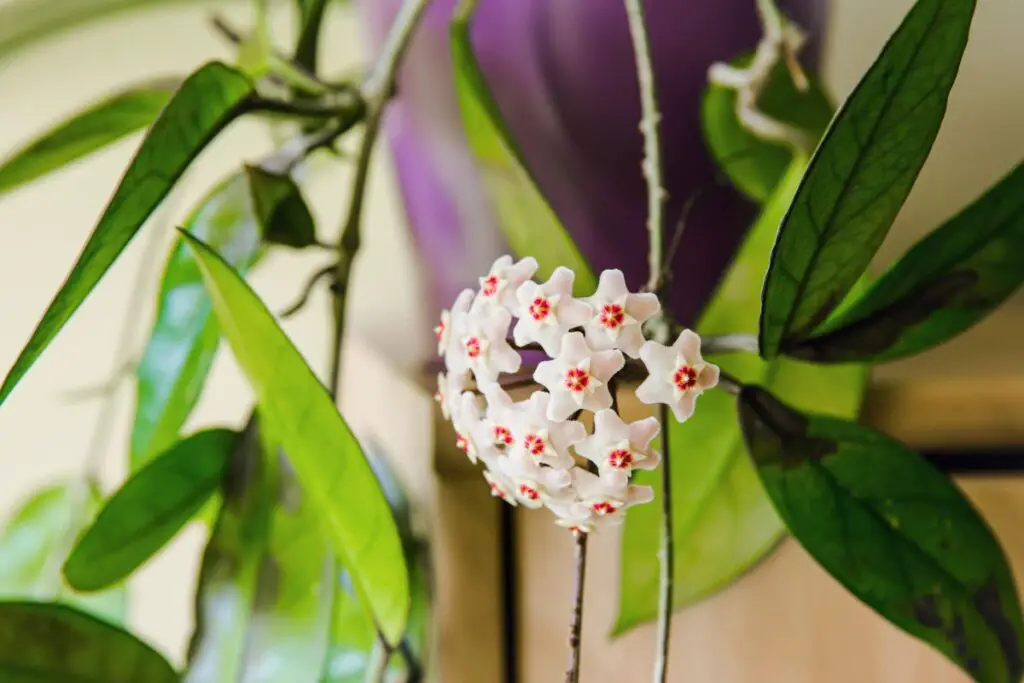
- Common Name: Wax plant, Porcelain flowers
- Family: Asclepiadaceae
- Height & Spread: 4-10 feet (1.2-3 m) long and 2-6 feet (0.6-1.8 m) wide
- Sun Exposure: Partial sun to deep shade
- Soil Type: Loose, well-draining
- Watering: Drought-tolerant, once every 10-14 days
- Toxicity: Non-toxic
Wax plants are popular because they look like synthetic plants with waxy leaves and rounded clumps of star-shaped flowers. Once you find the sweet spot in your home for their comfort, they’ll require minimal care that you might forget they’re real plants.
In the soil mix, they have short, fibrous roots so you can grow them in shallow pots or hanging baskets. Avoid oversized pots because they increase the risks of overwatering and root rot.
They also have adventitious roots that help them climb and absorb moisture from the air. You can train them to grow along a stake, a trellis, or wires shaped into a wreath.
ZZ Plant (Zamioculcas zamiifolia)
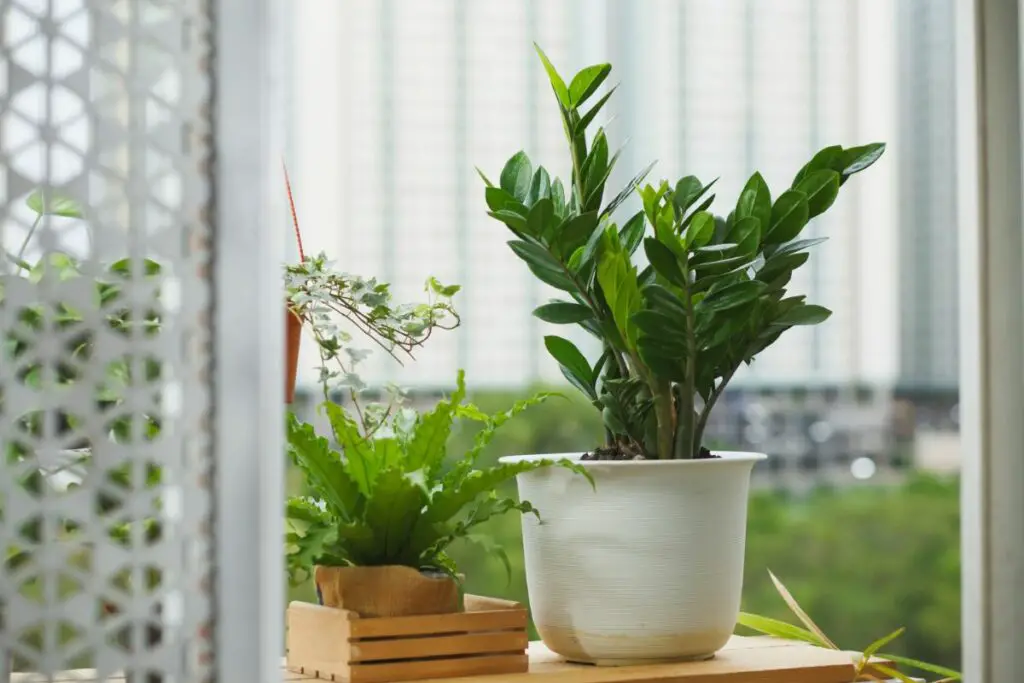
- Common Name: ZZ plant, Zanzibar gem
- Family: Araceae
- Height & Spread: 2-4 feet (0.6-1.2 m) tall and wide
- Sun Exposure: Dappled sun to deep shade
- Soil Type: Loose, well-draining, rich
- Watering: Drought-tolerant, every 2-3 weeks
- Toxicity: Mild
ZZ plants are also synthetic-looking plants with glossy, green leaves. They’re very resilient and easy to care for, so they’re highly recommended for beginner gardeners.
They can join your low-light plant collection near a northern window and keep it green all year round because they don’t shed leaves in winter. However, be mindful of your ZZ plant’s stress signals. Although tolerant, it’ll lean or become leggy if there isn’t enough light.
You can prune overgrown or leggy stems in spring to early summer to maintain your plant’s shape. Properly dispose of the cut leaves and stems because they can be toxic when ingested by kids and pets.
Final Thoughts
Houseplant care doesn’t have to be stressful. Plenty of low-maintenance plants, from low-growing succulents to hanging basket beauties, can match your home garden’s aesthetic idea.
The list above also includes foliage or flowering plants that will thrive in various light conditions, making them perfect for any home.
Start small and choose one or two plants from the list that resonates with you. Once you confirm that plant care works well with your daily activities and gives you a rewarding experience, you can explore different plants and be as creative as you want.
All it takes is patience and consistency. Before you know it, you’ll soon have a thriving and lively indoor garden.

